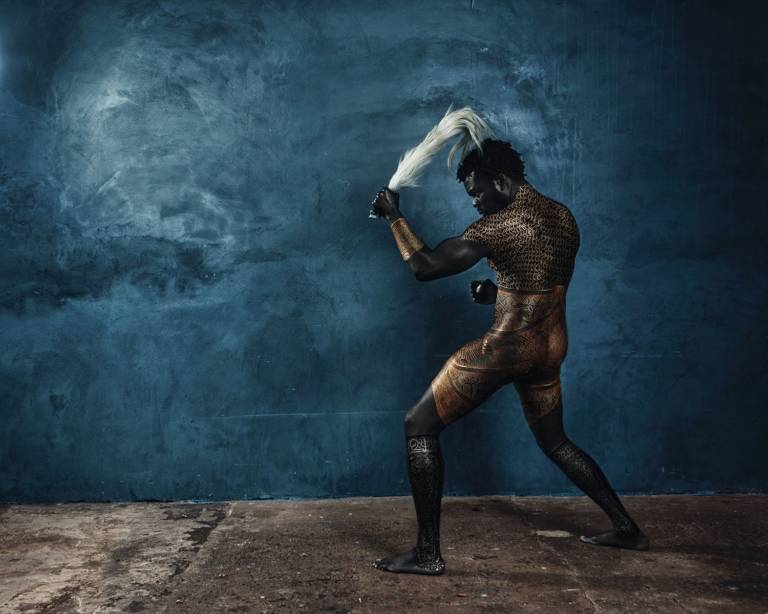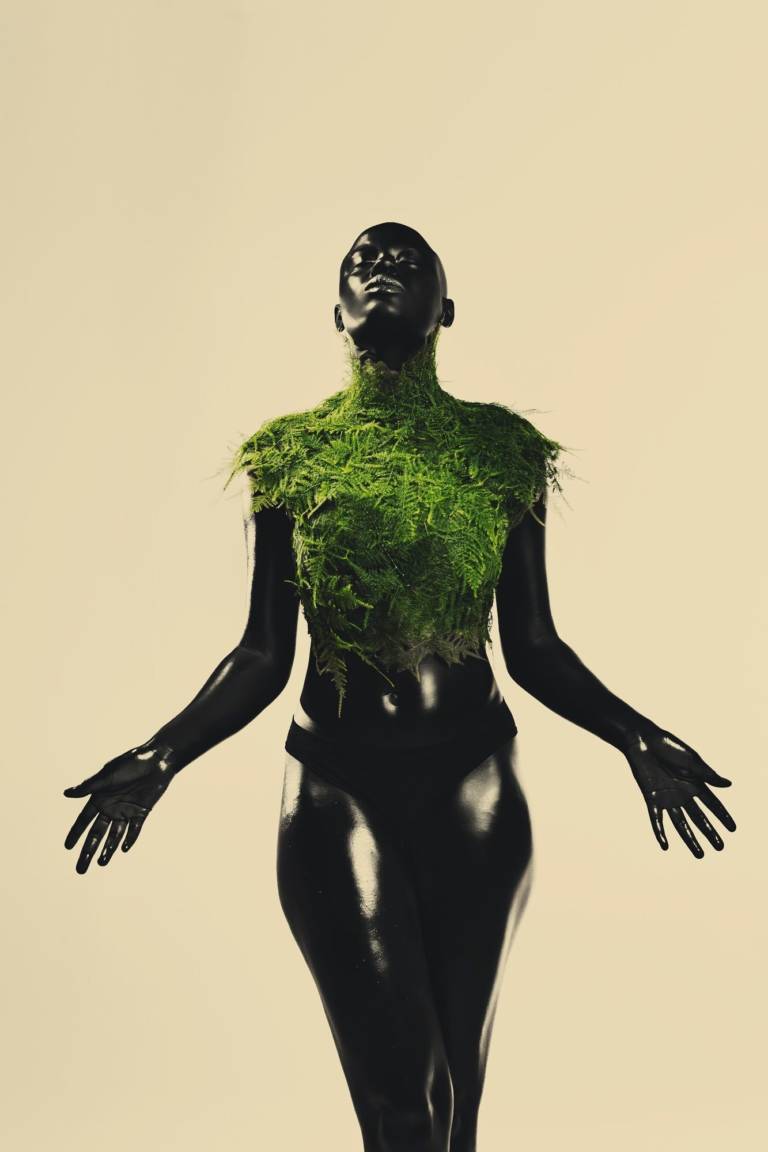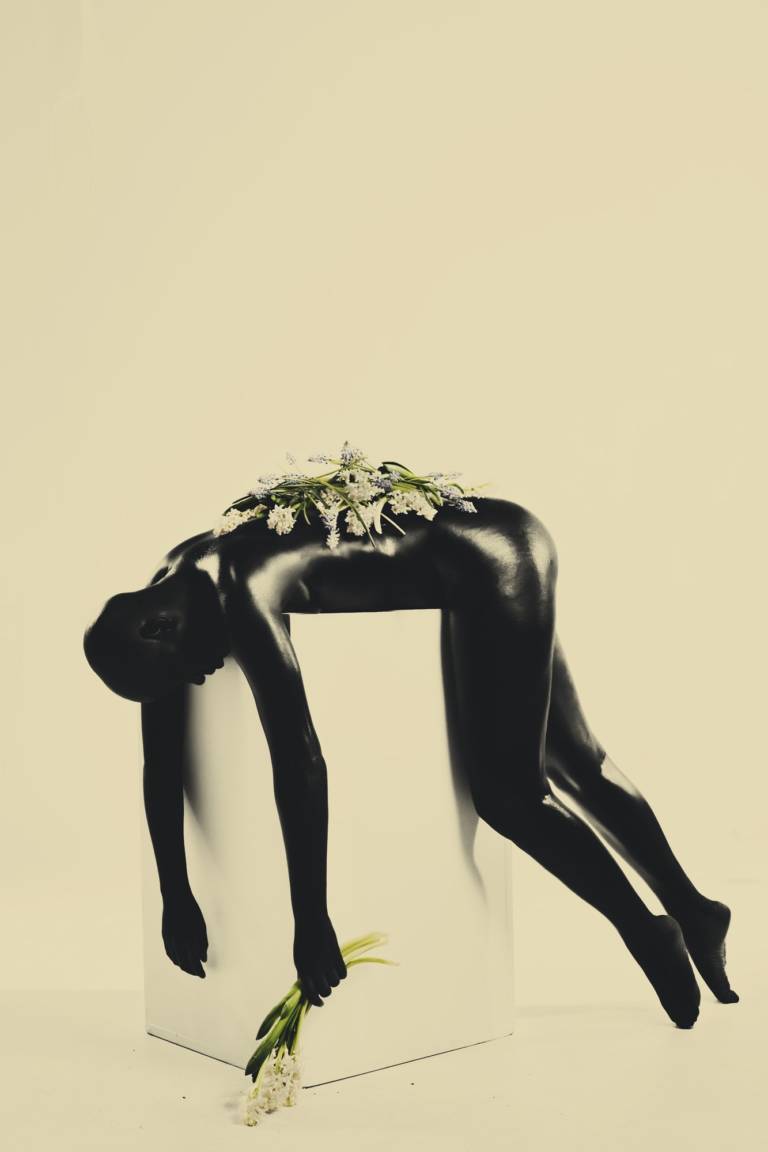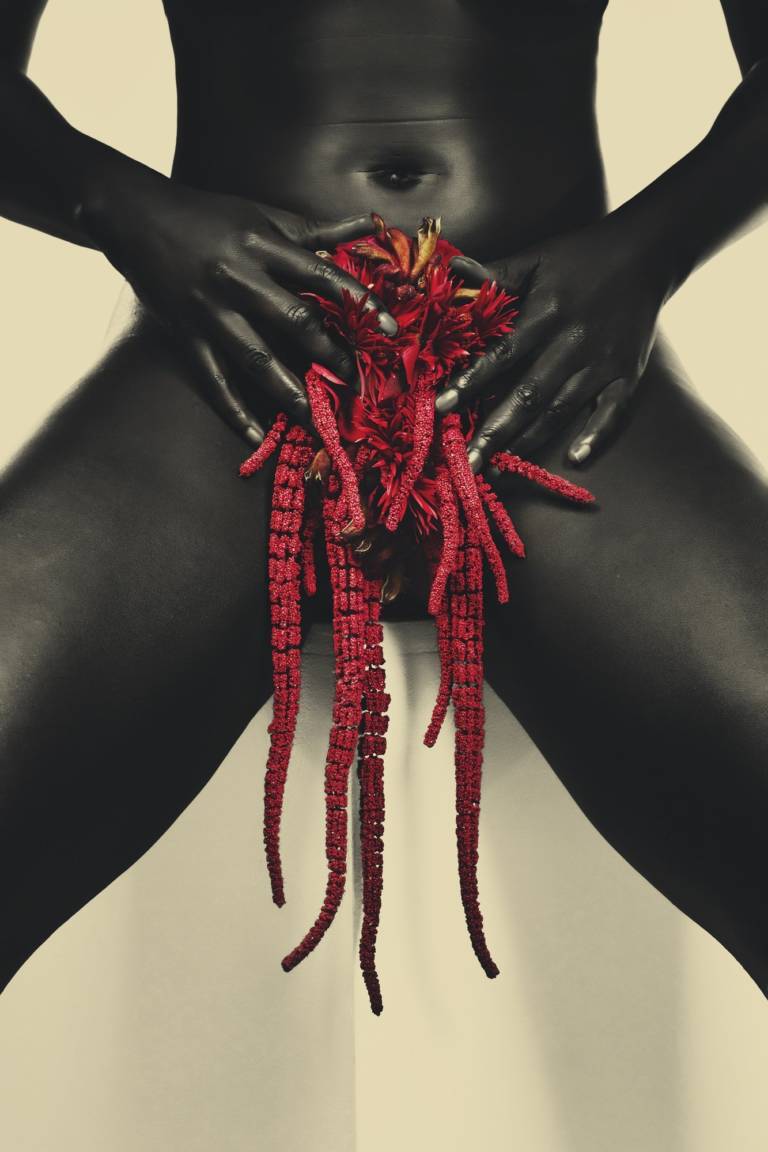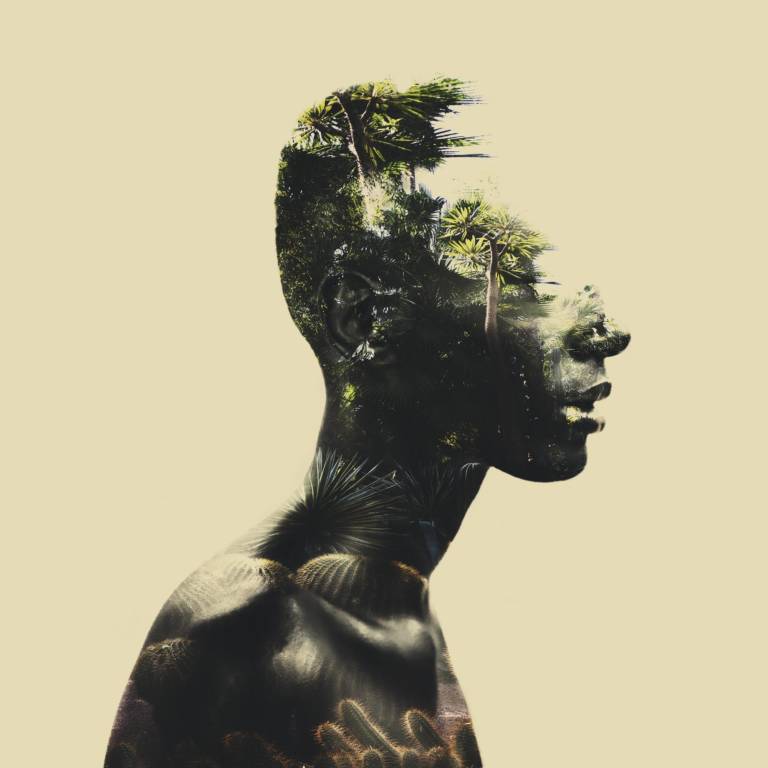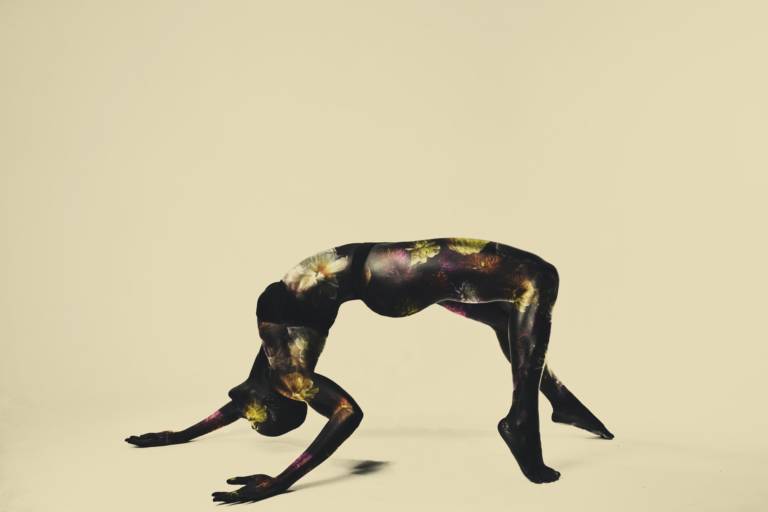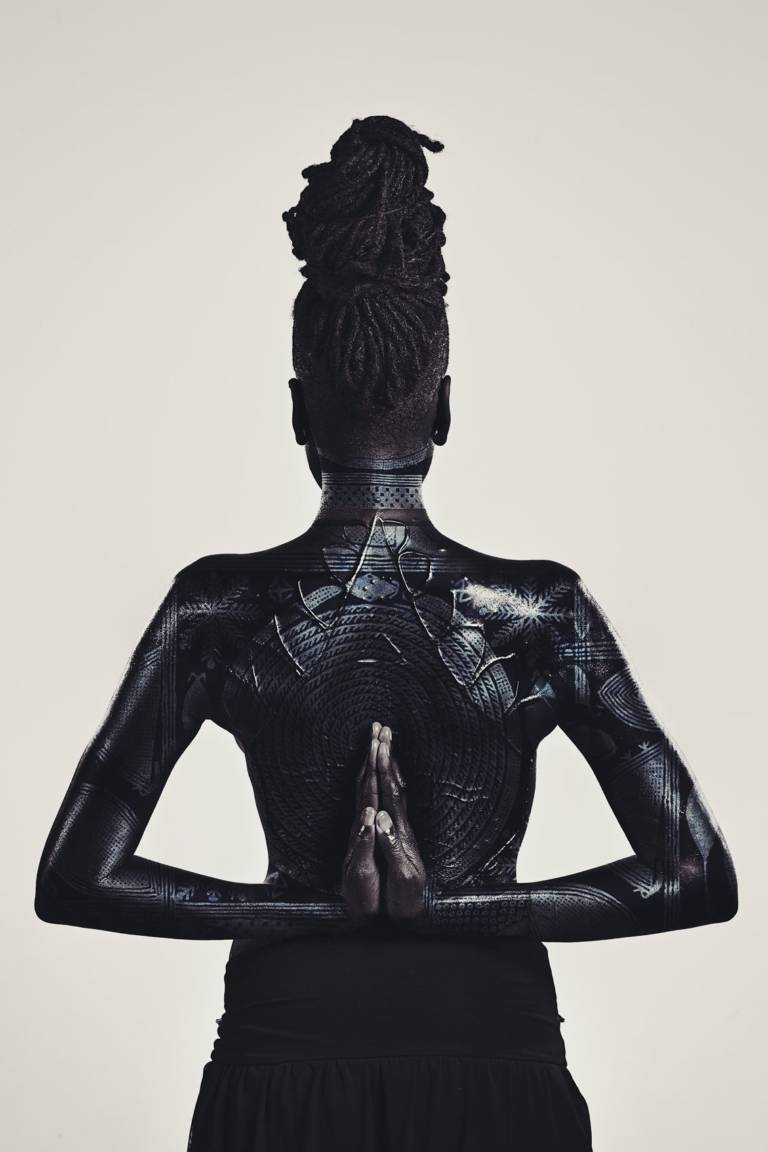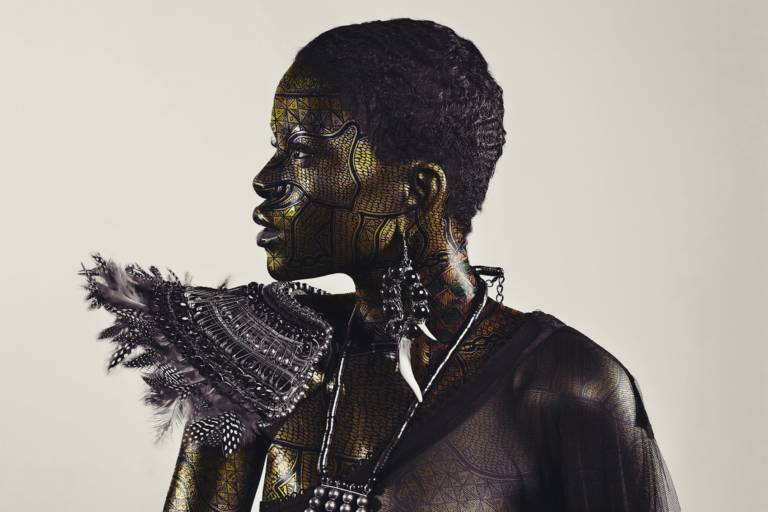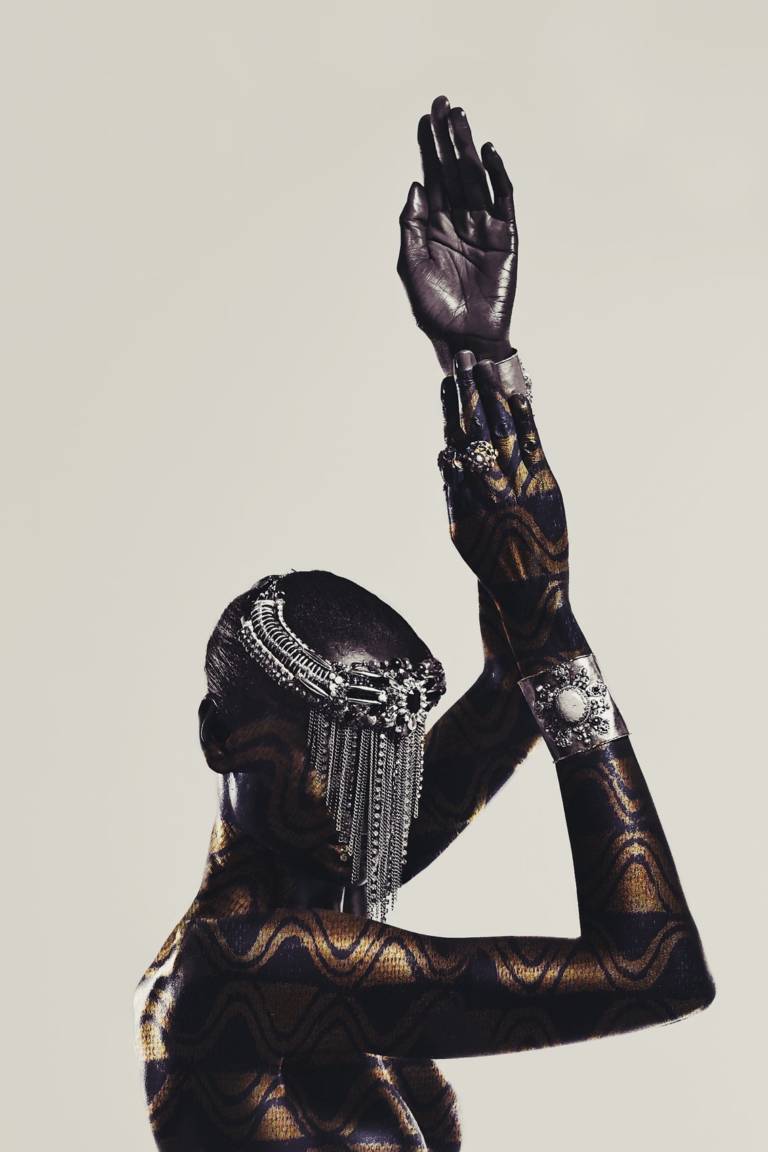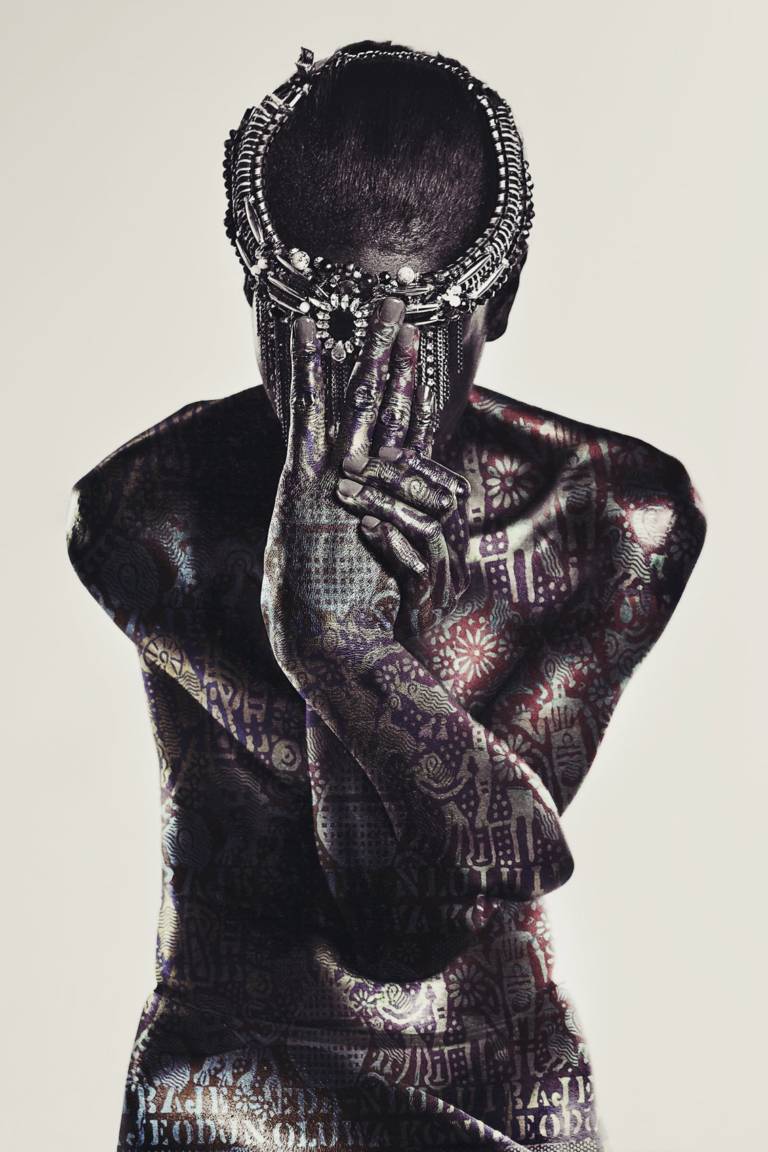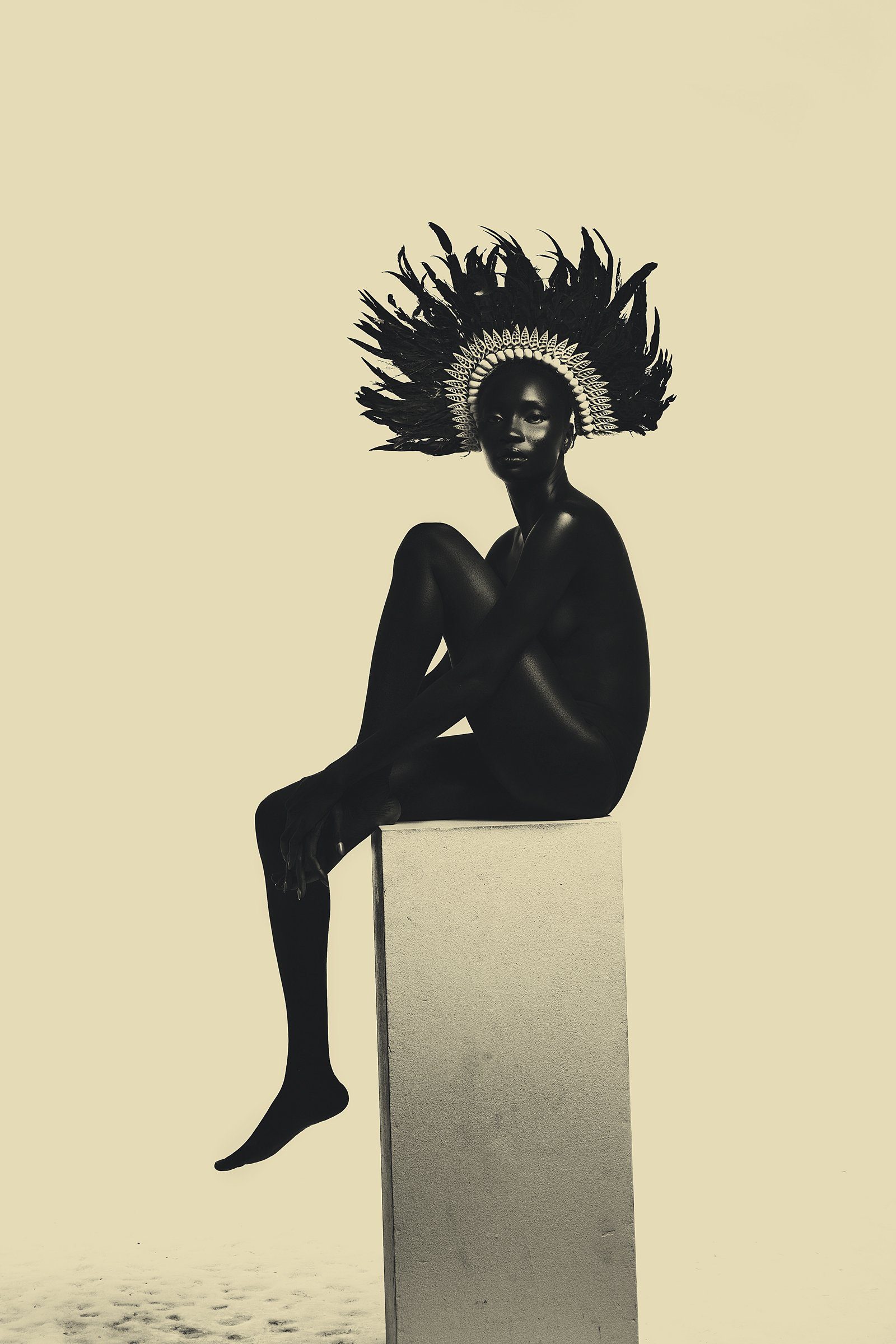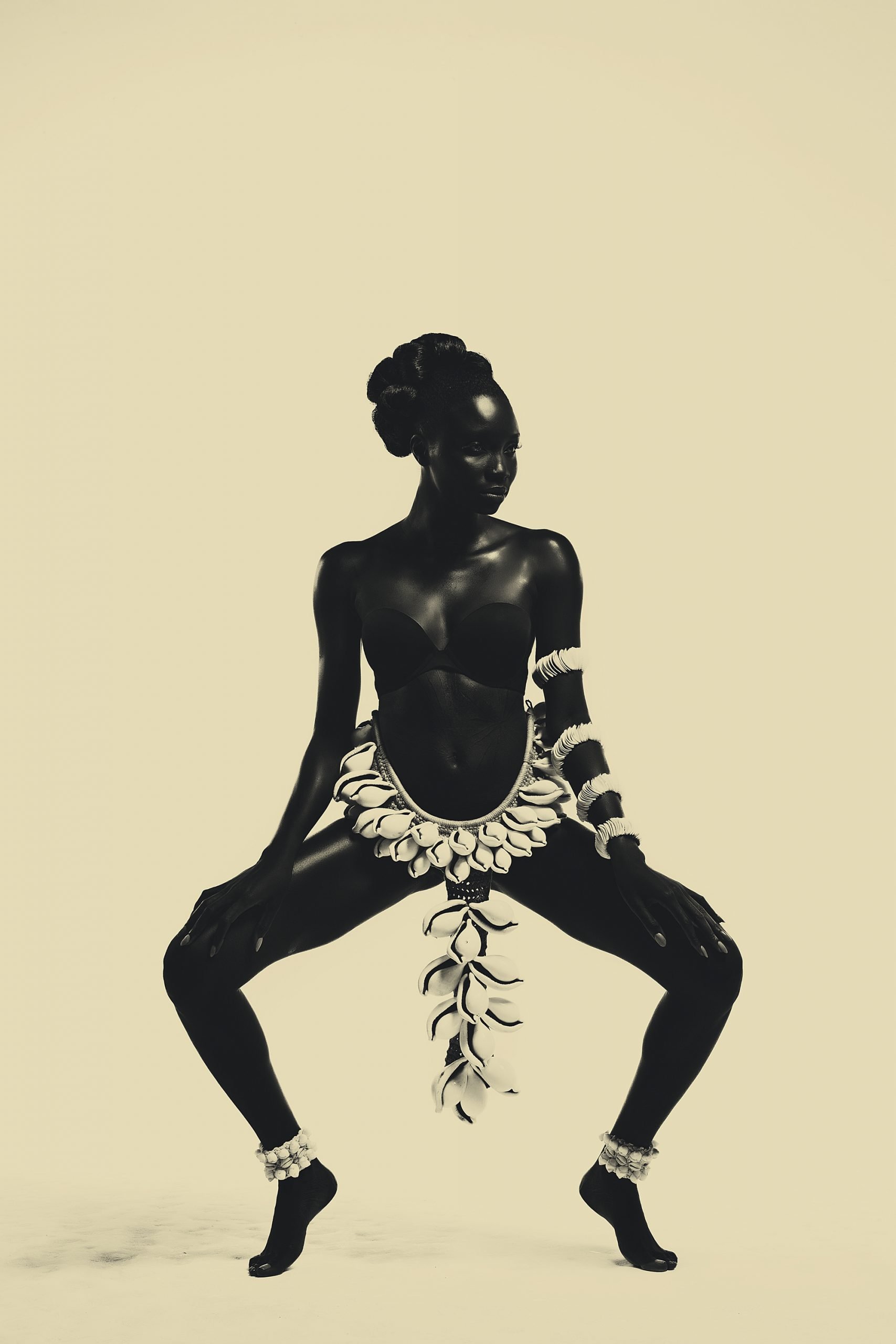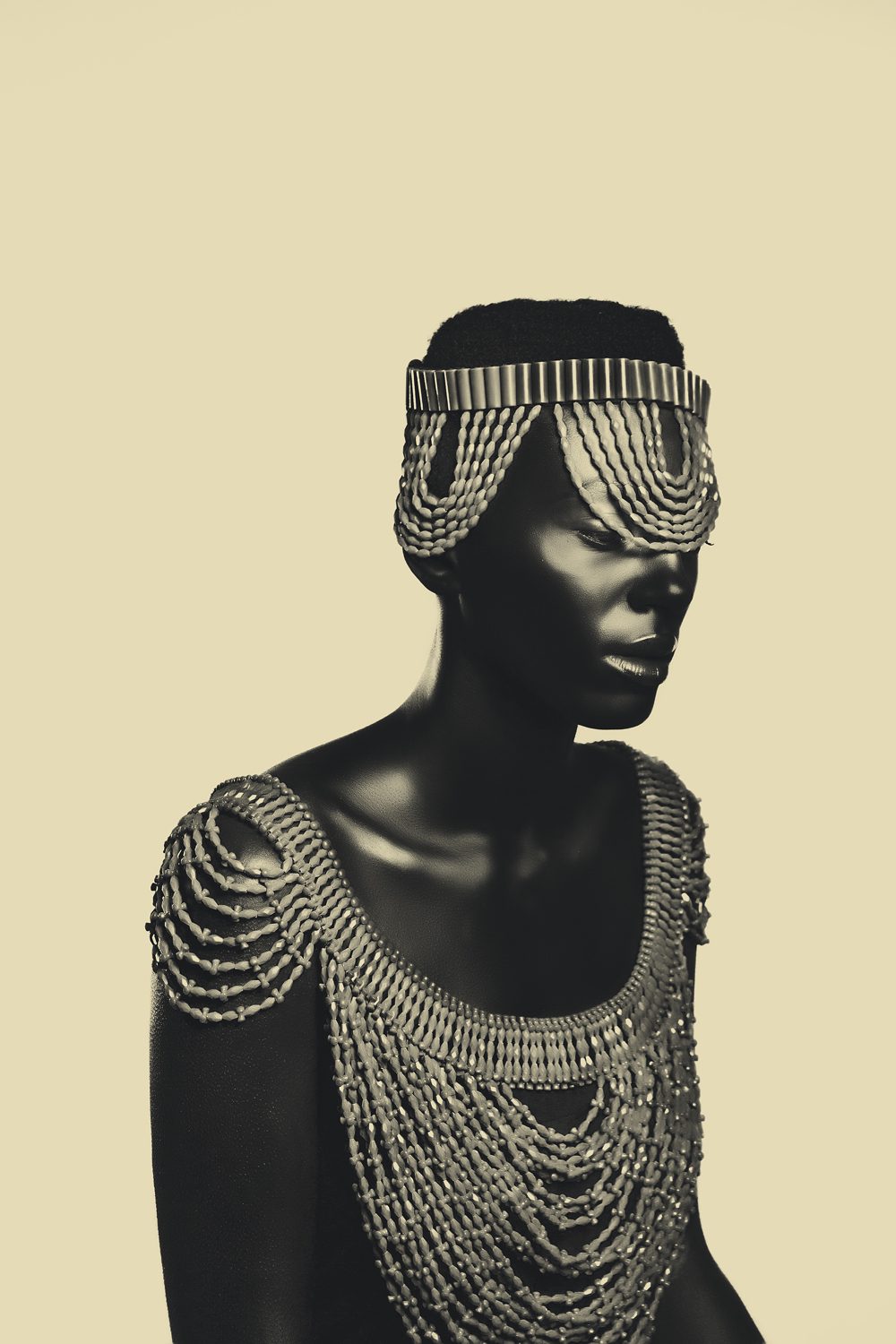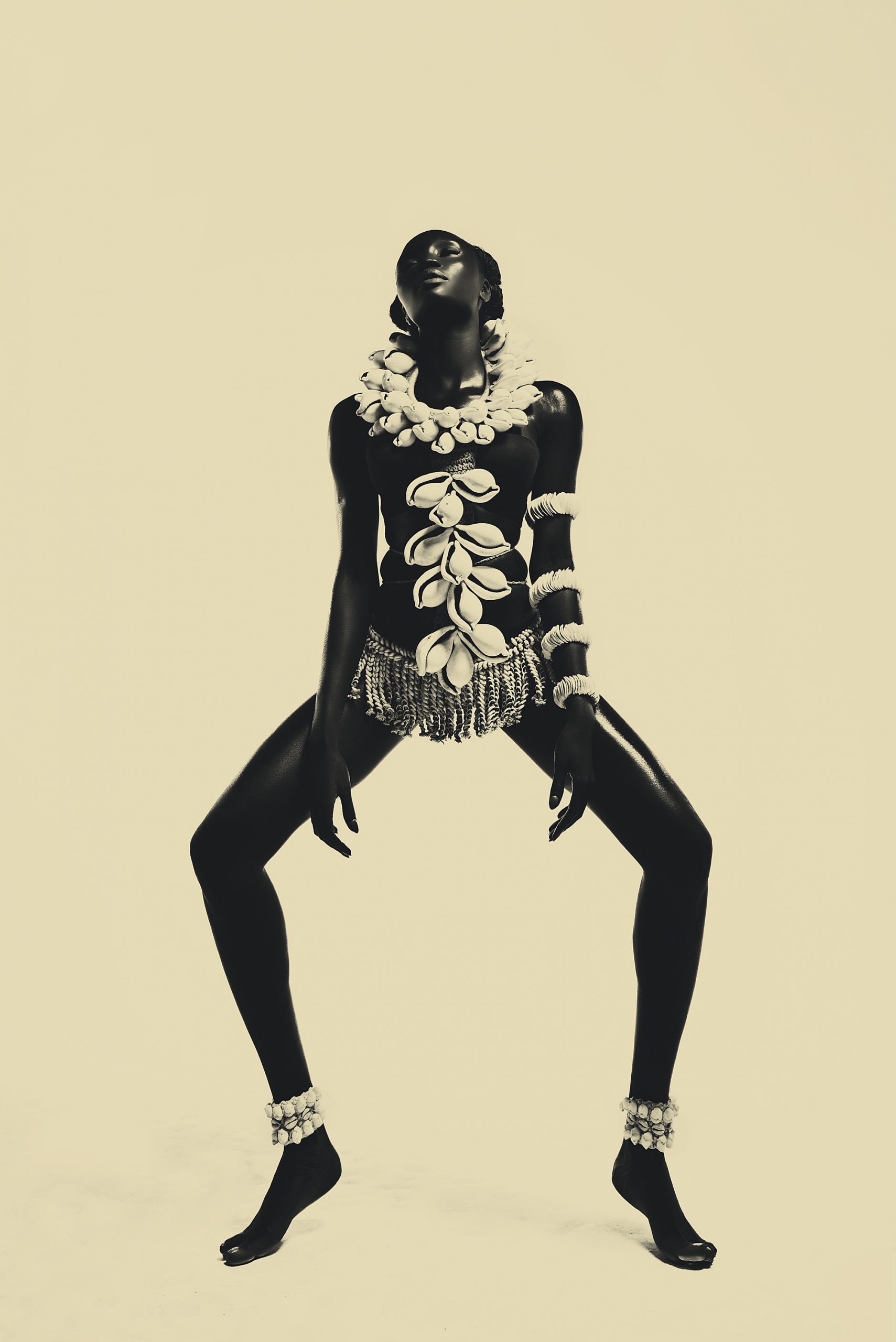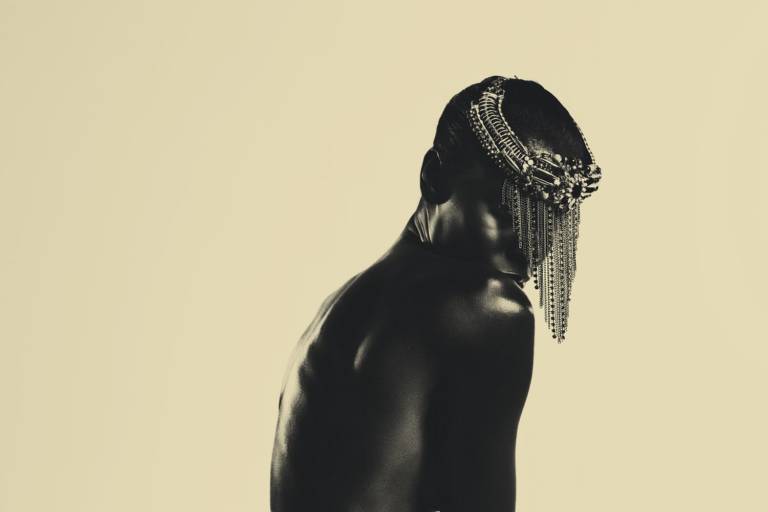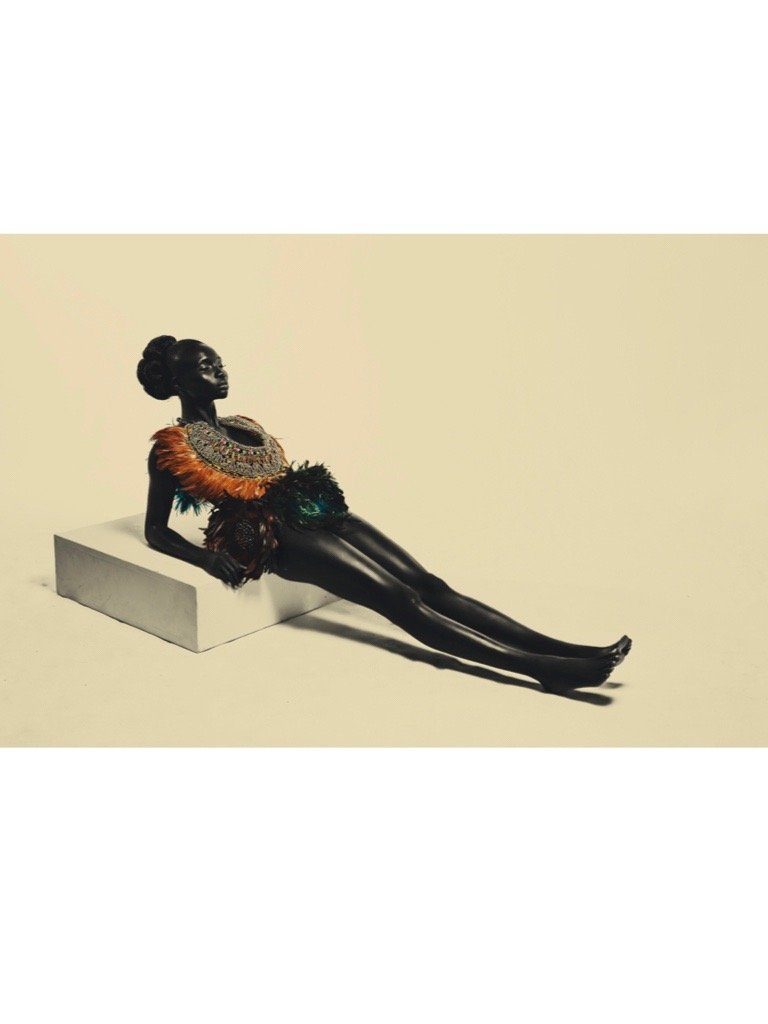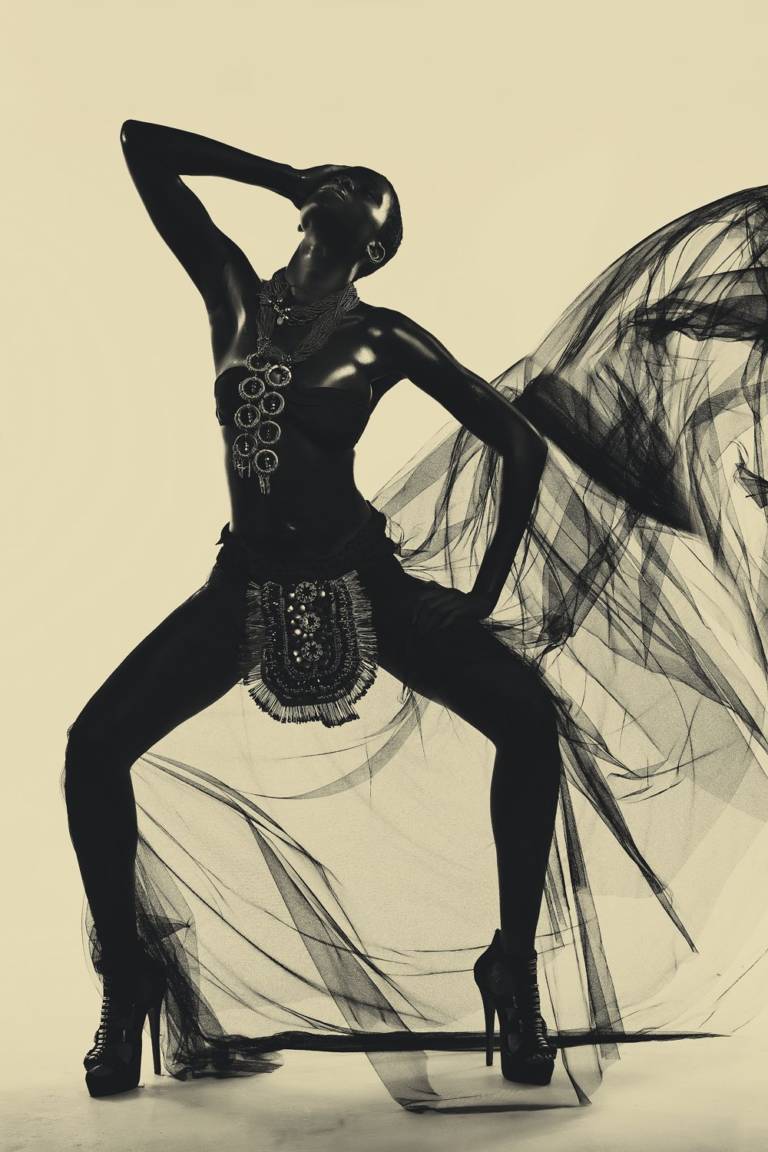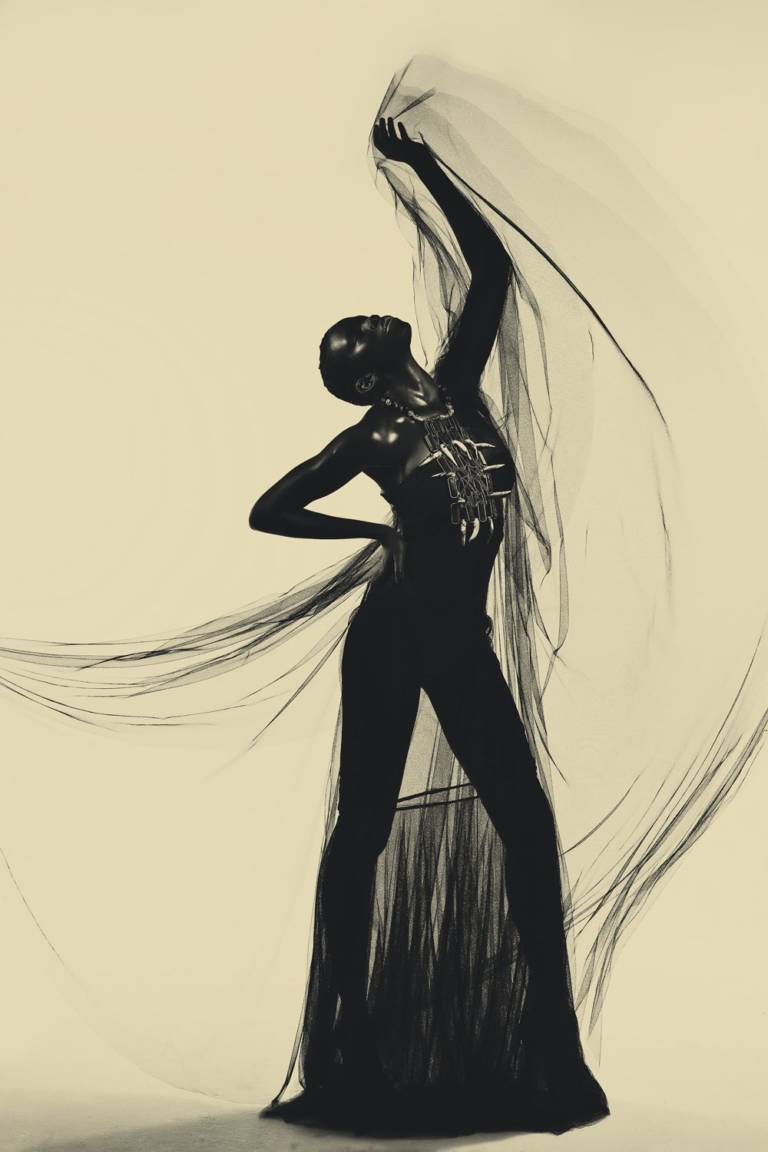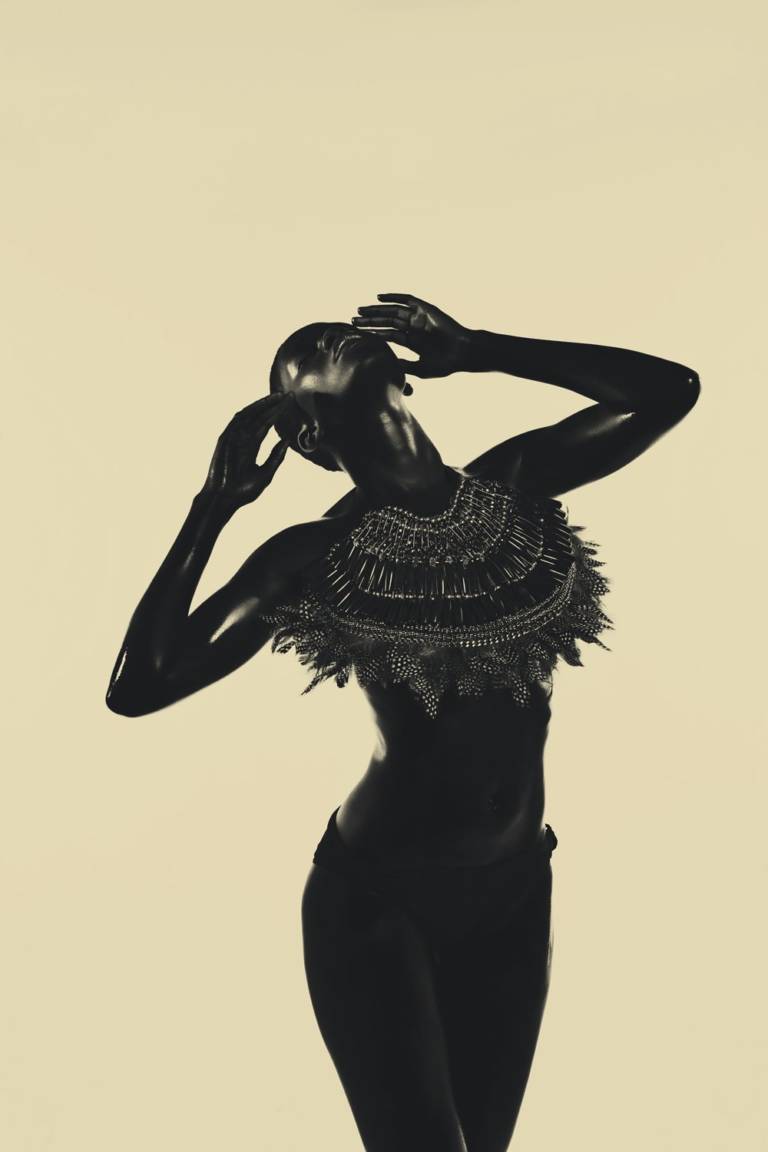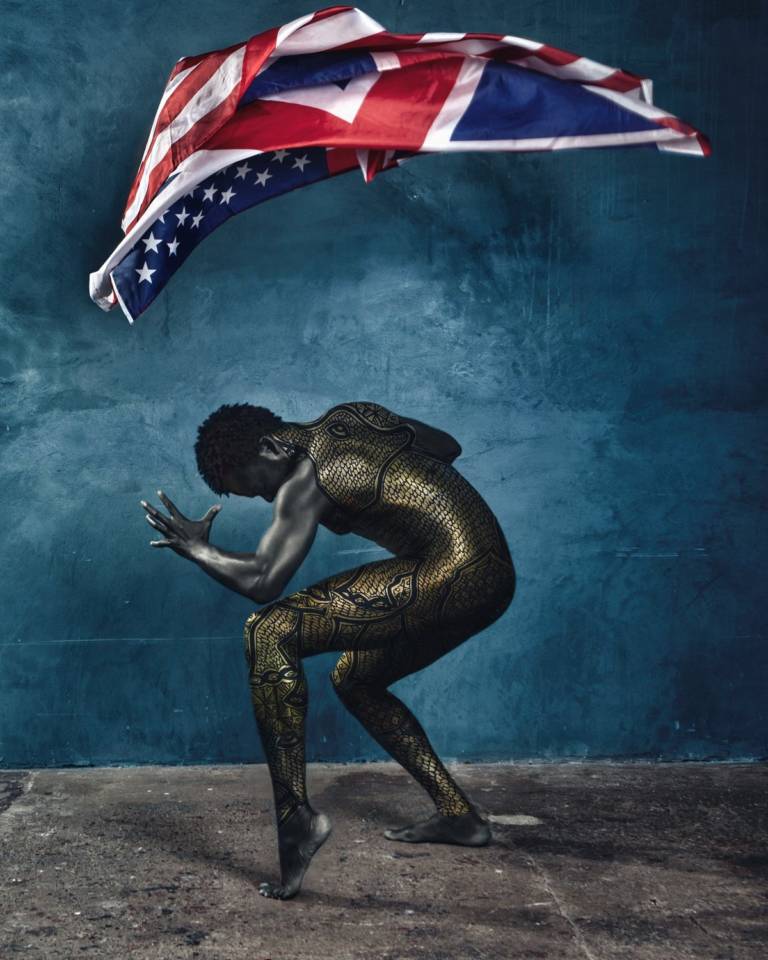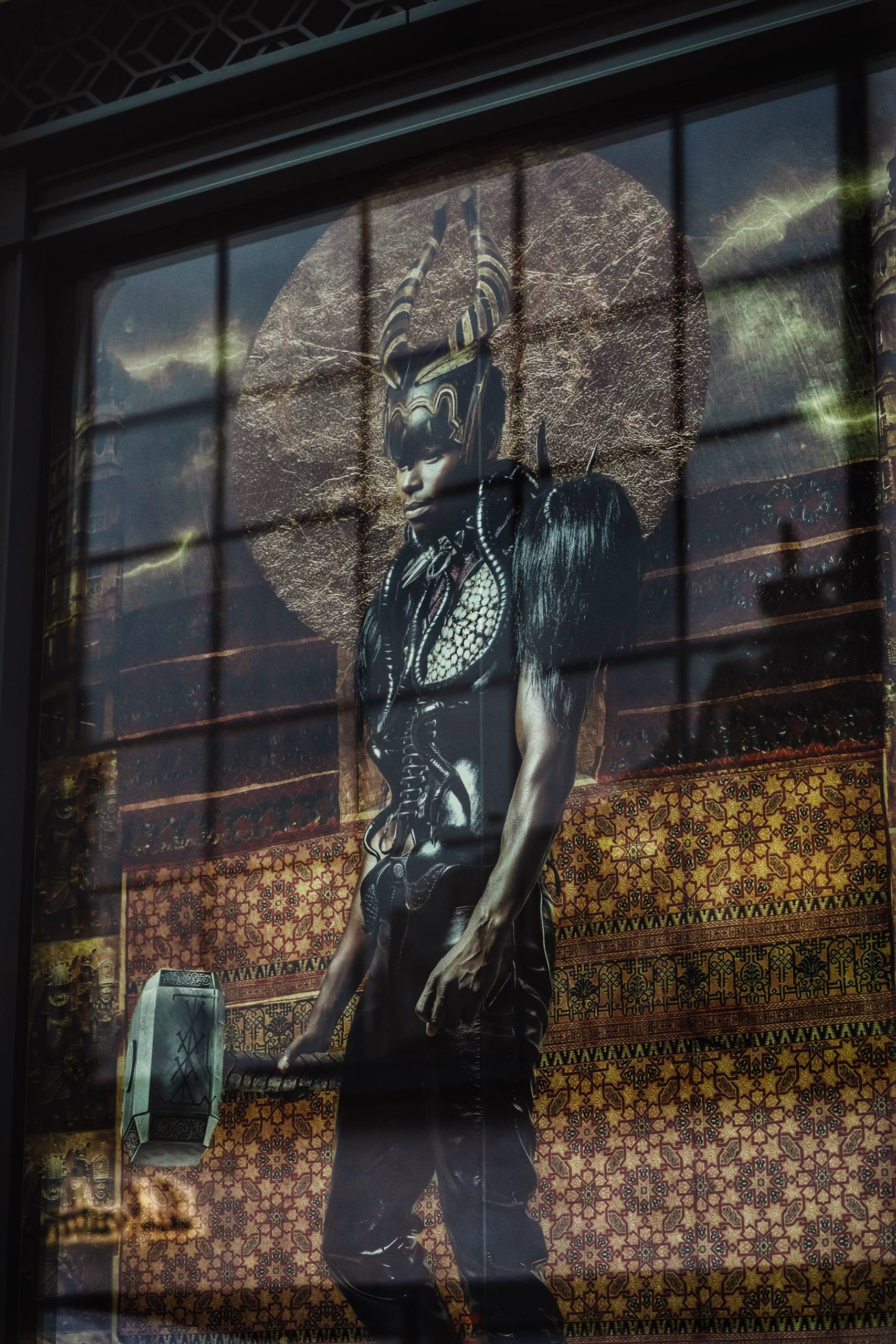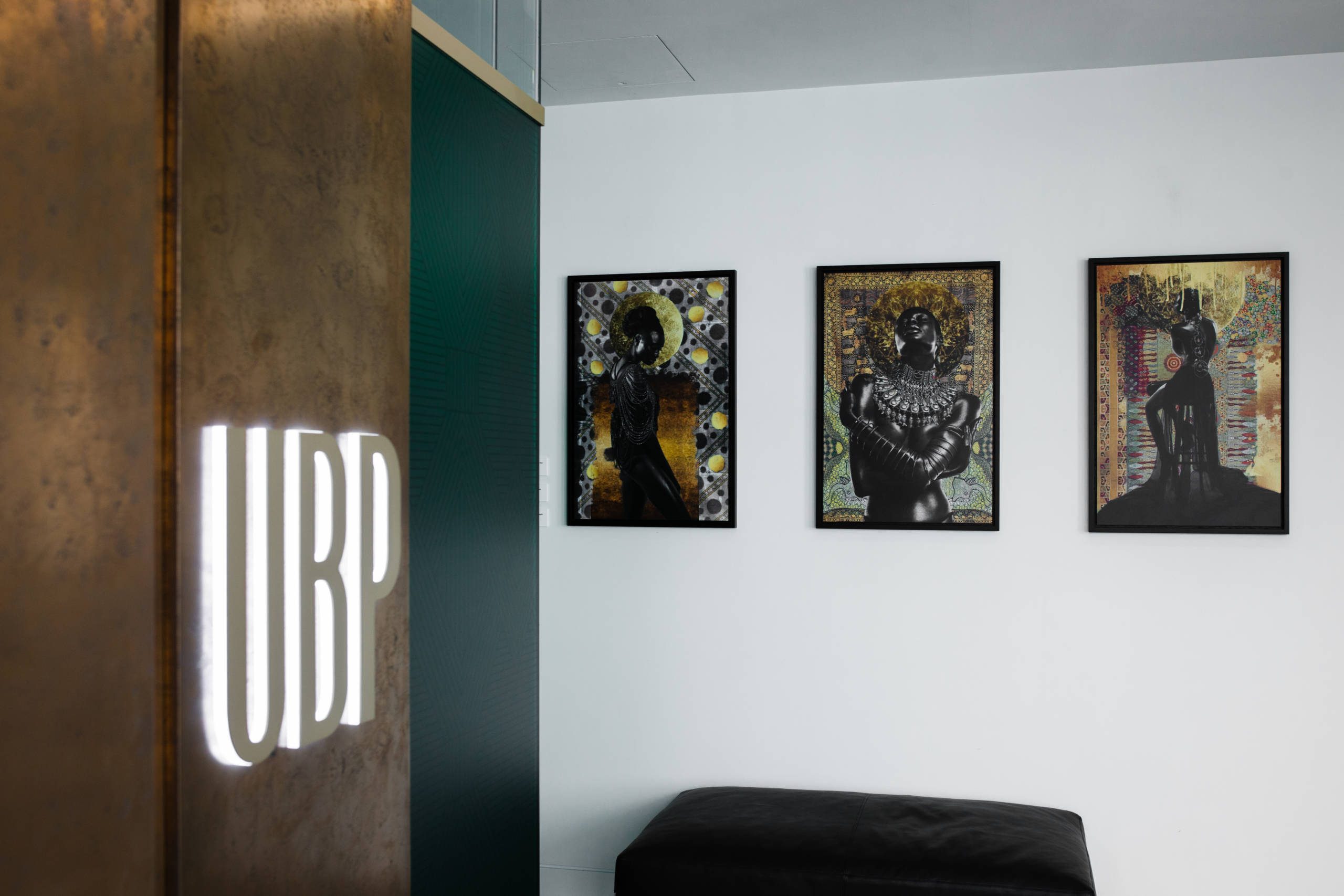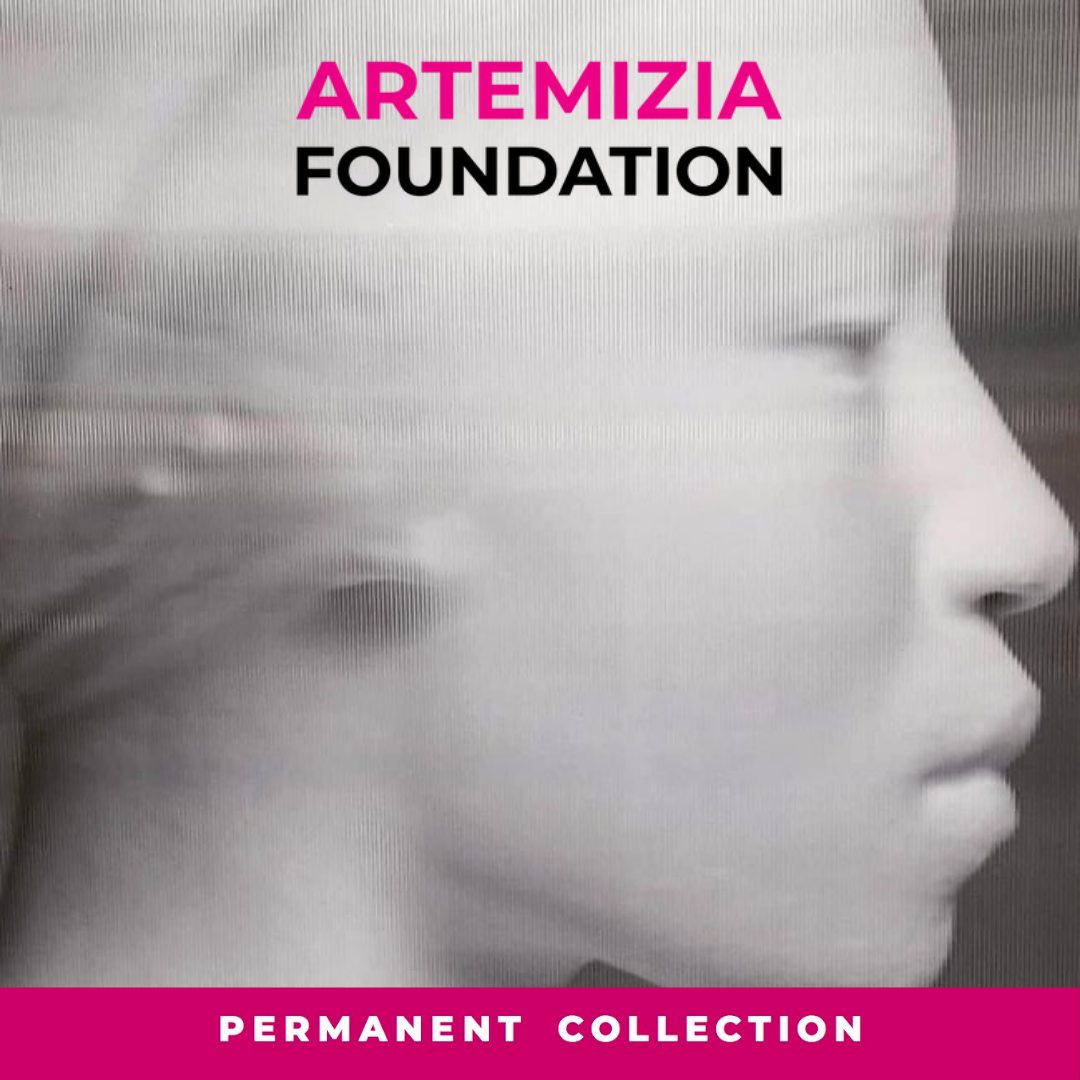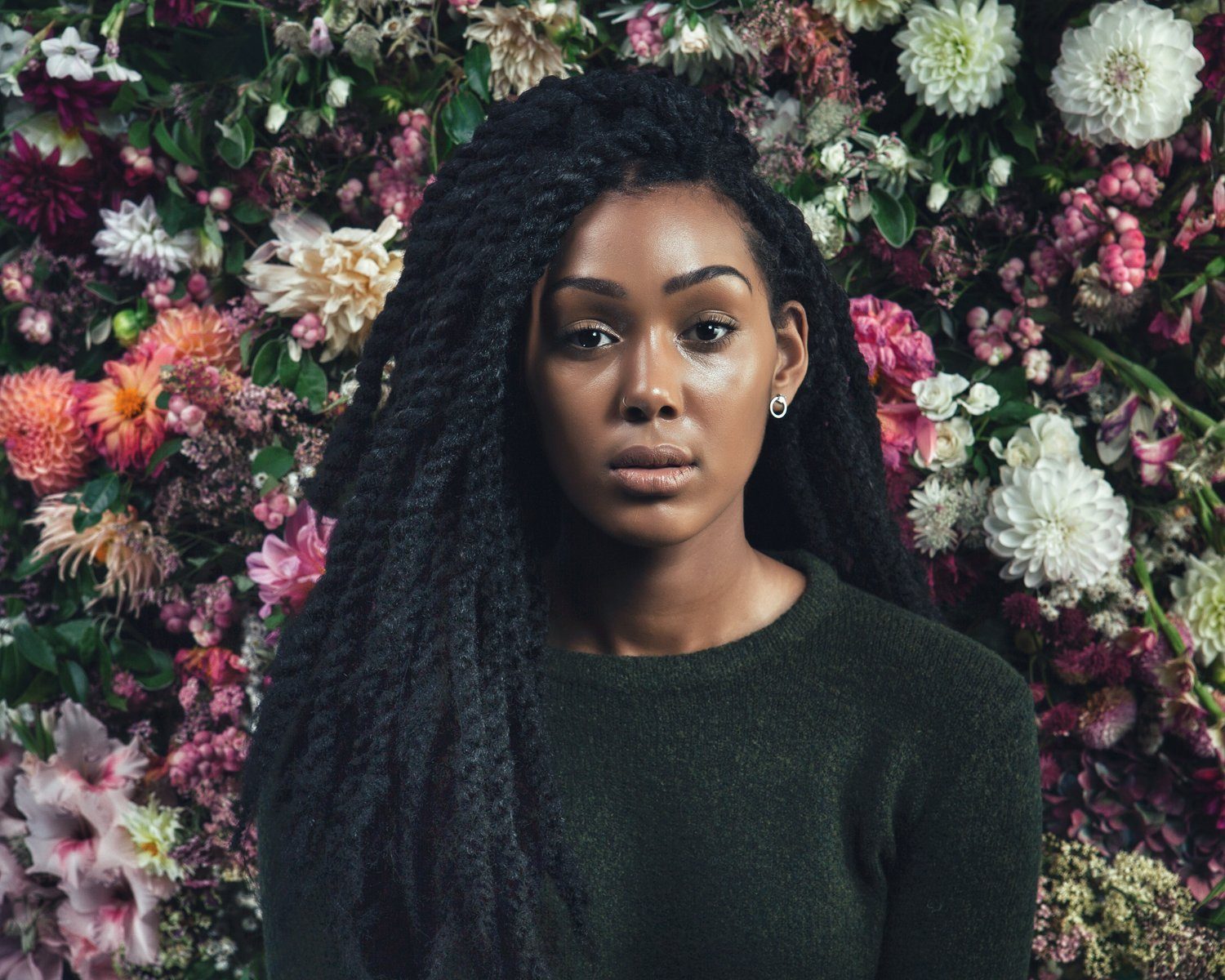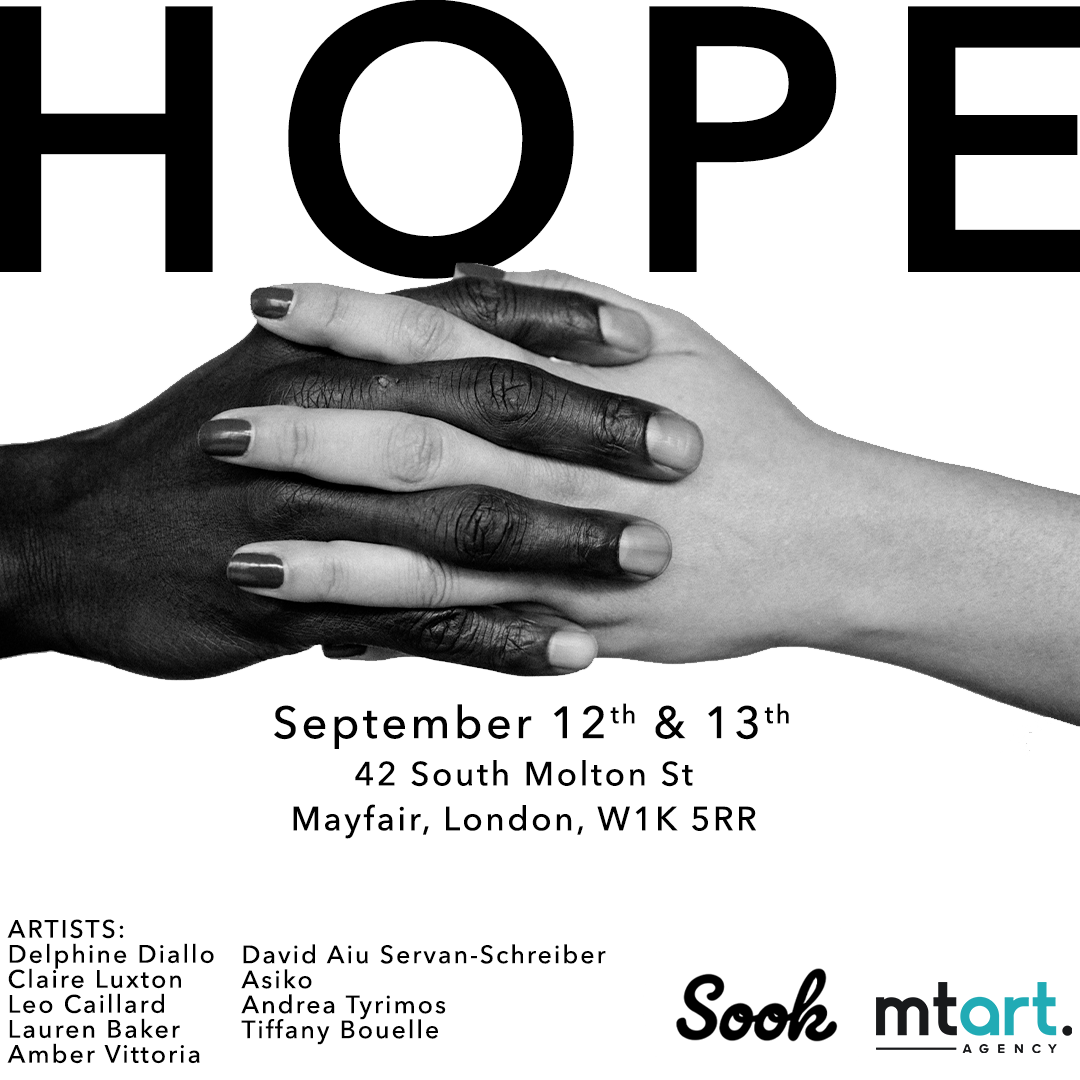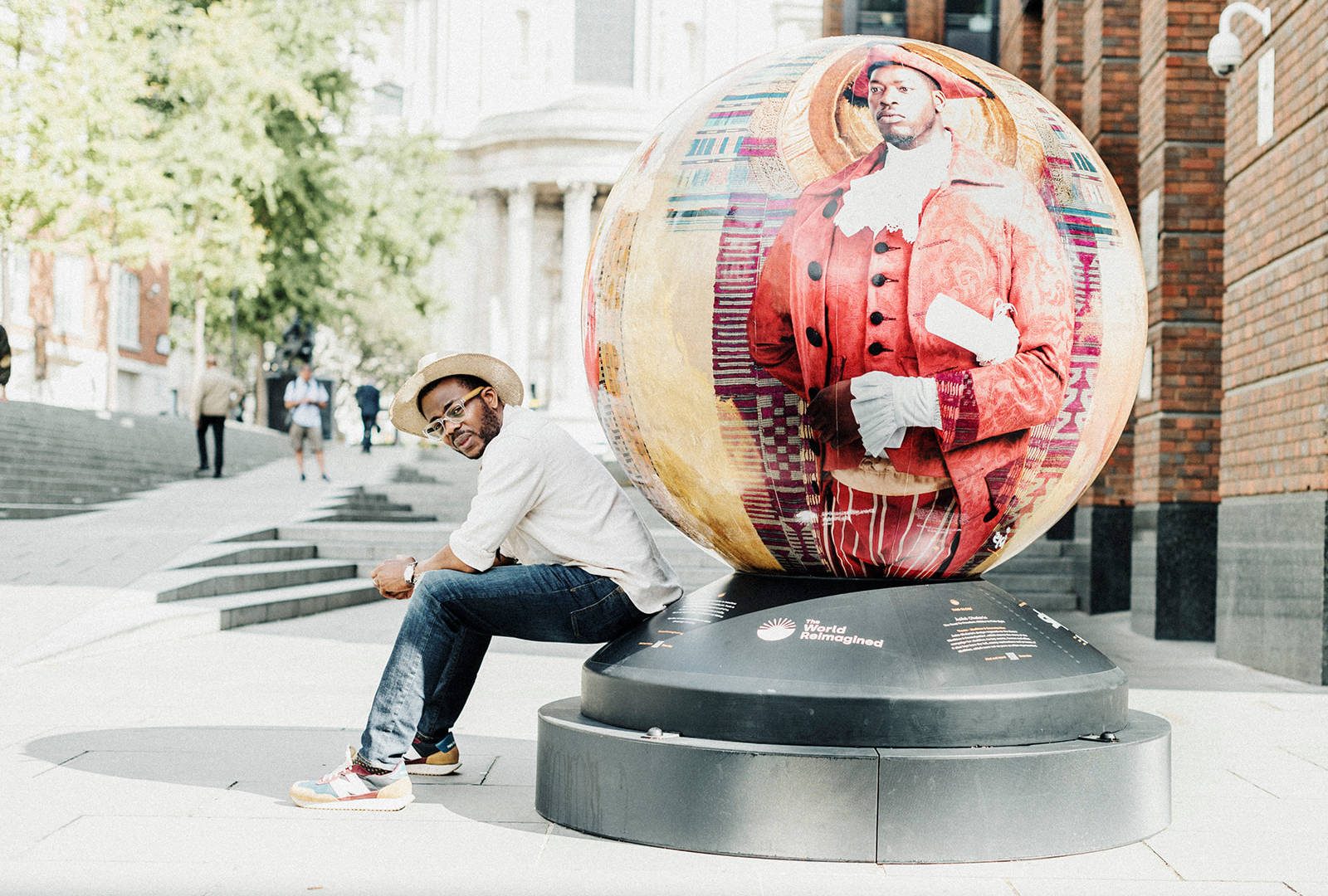
Àsìkò
Photography
Àsìkò has been taking “visual notes” all his life, from his father’s collection of local Nigerian art to his formative trip to the Vatican city. This wide-ranging visual culture will later become the bedrock of his acute aesthetics. In 2005, while studying for his chemistry and pharmacy degree, Àsìkò bought his first camera and discovered in photography a fantastic diary-like tool.
Beyond his daily visual musings, in 2015, Àsìkò started to see photography as a tool to document his journey from Nigeria to England; depicting his experience with displacement and acculturation. Conversations with friends, souvenirs and dreams, became cues to generate new bodies of work. Àsìkò proposes a tale of the British Nigerian experience in London. While always centering the black body in his images, Àsìkò proceeds to hybridise both of these cultures through objects and ornaments.
If his images speak of our contemporary times, Àsìkò includes fragments of history in his compositions. As he states, he “looks back in order to look forward”. This frame of reference enables him to explore ideas around heritage, especially Yoruba folklore and elements of transnational cultures. Àsìkò finds inspiration in books on African spirituality and deities in ancestral tales. His portraits become guides into lesser-known parts of West African customs and myths. Photography becomes a way of researching, understanding, and sharing.
Àsìkò is unafraid to confront and challenge the legacies of patriarchy and gender inequality, and aspires to depict the complexity of womanhood including traumas, and vulnerability, but also strength and joy. He aims at creating codes for an empowered iconography of black men and women. More recently, in an attempt to explore ideas about masculinity, Àsìkò has been developing his practice of self-portraits. In a cinematic or theatrical way, Àsìkò uses his creative practice as a way of processing life’s challenges and helps him work through socio-political events.
Àsìkò’s work has been displayed in a variety of major institutions from the Gagosian – for the ‘Rites of Passage’ exhibition in Britannia Street, London – to the Venice Biennale. Through the artist’s unique hybridisation of African and European aesthetics in his practice, as well as his focus on capturing Yoruba culture in diaspora contexts, Àsìkò has created his own unique lens, which has subsequently made him become one of the most exciting and highly anticipated young artists in Britain today.
Selected
artworks
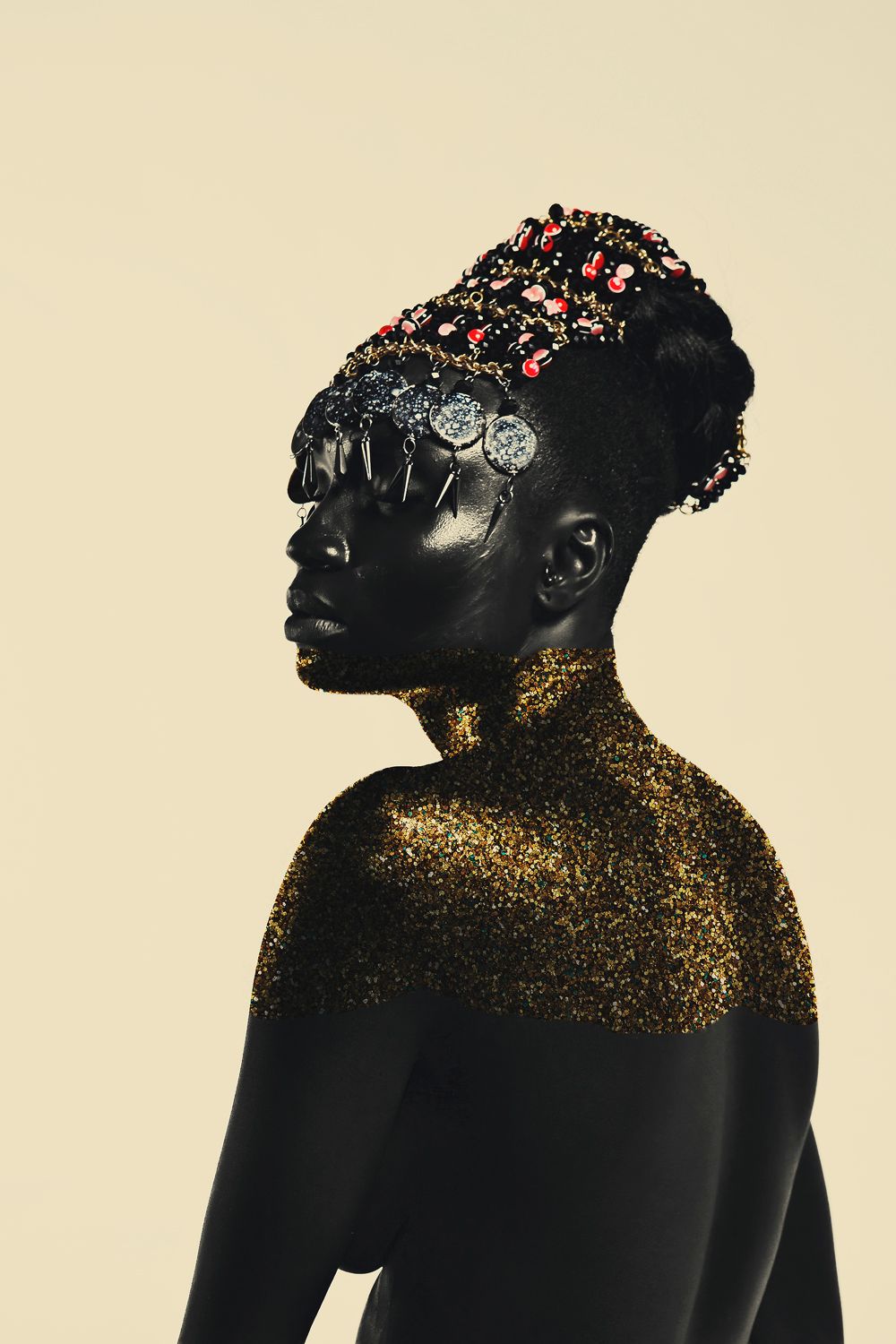
Gold Is Her Forever Color I , 2020
Aluminium dibond in black oak frame with passé-partout 66.7 x 46.7 cm (Edition of 4); 89 x 64.7 cm (Edition of 3); 122.7 x 84.5 cm (Edition of 3)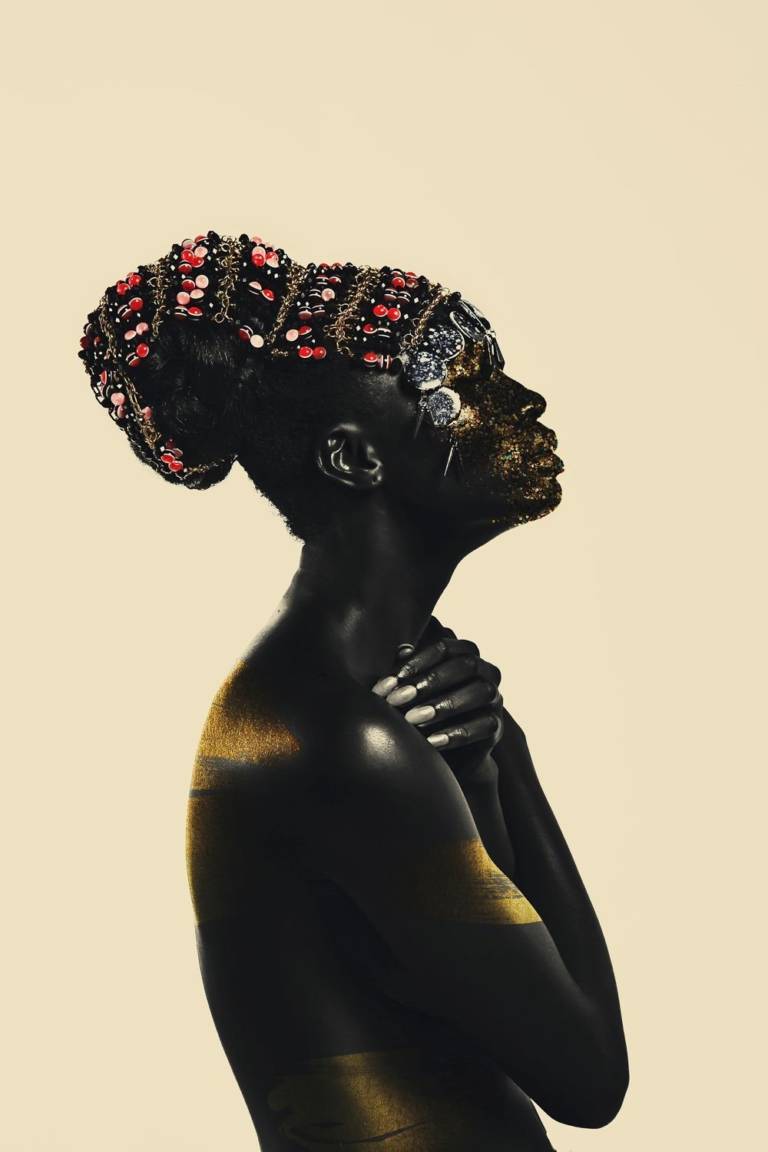
Gold Is Her Forever Colour II , 2020
Aluminium dibond in black oak frame with passé-partout 66.7 x 46.7 cm (Edition of 4); 89 x 64.7 cm (Edition of 3); 122.7 x 84.5 cm (Edition of 3)
In Recognition of Her Power , 2020
Aluminium dibond in black oak frame with passé-partout 46.7 x 66.7 cm (Edition of 4); 64.7 x 89 cm (Edition of 3); 84.5 x 122.7 cm (Edition of 3)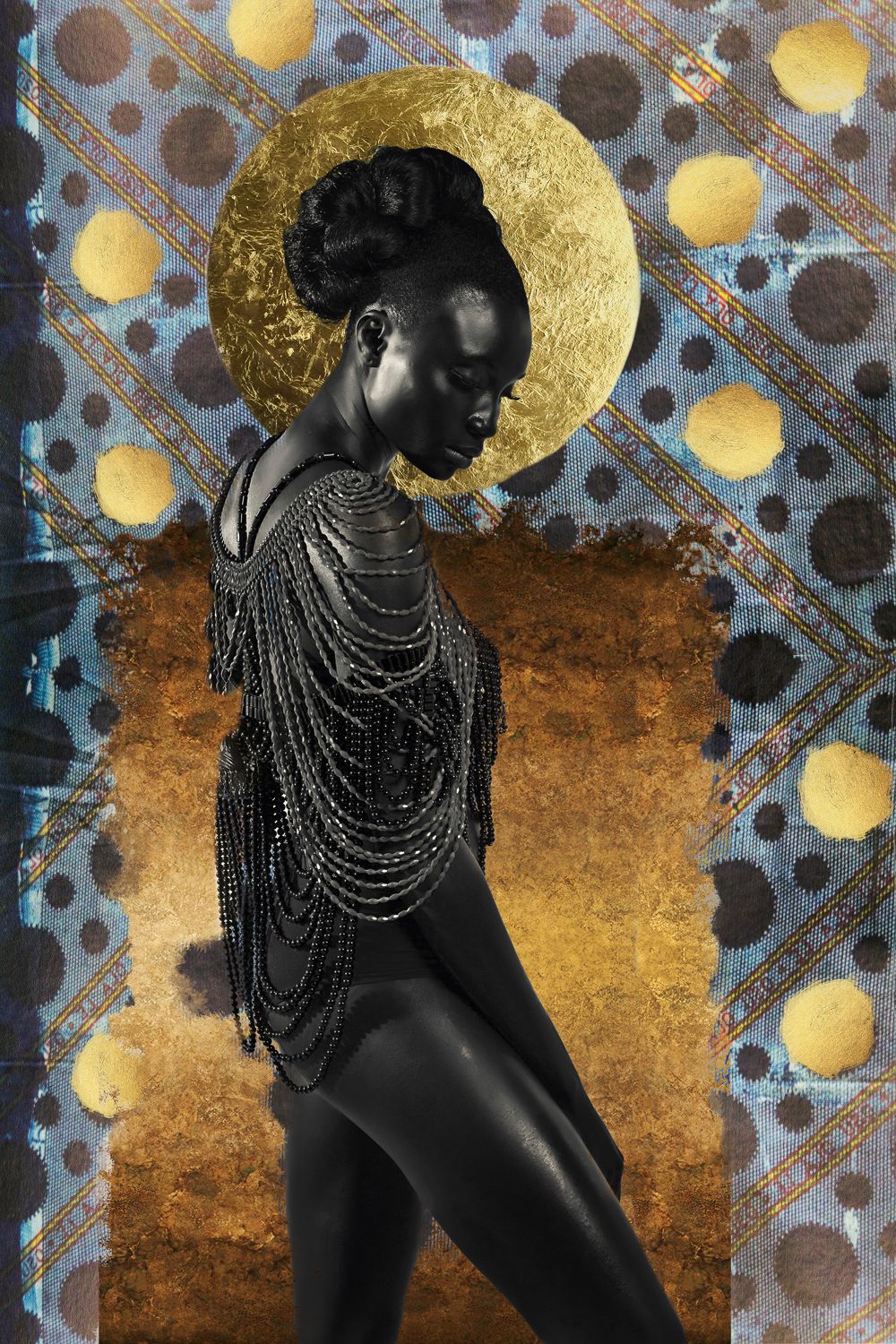
Constellations of Beauty , 2020
Aluminium dibond in black oak frame with passé-partout 66.7 x 46.7 cm (Edition of 4); 89 x 64.7 cm (Edition of 3); 122.7 x 84.5 cm (Edition of 3) Sold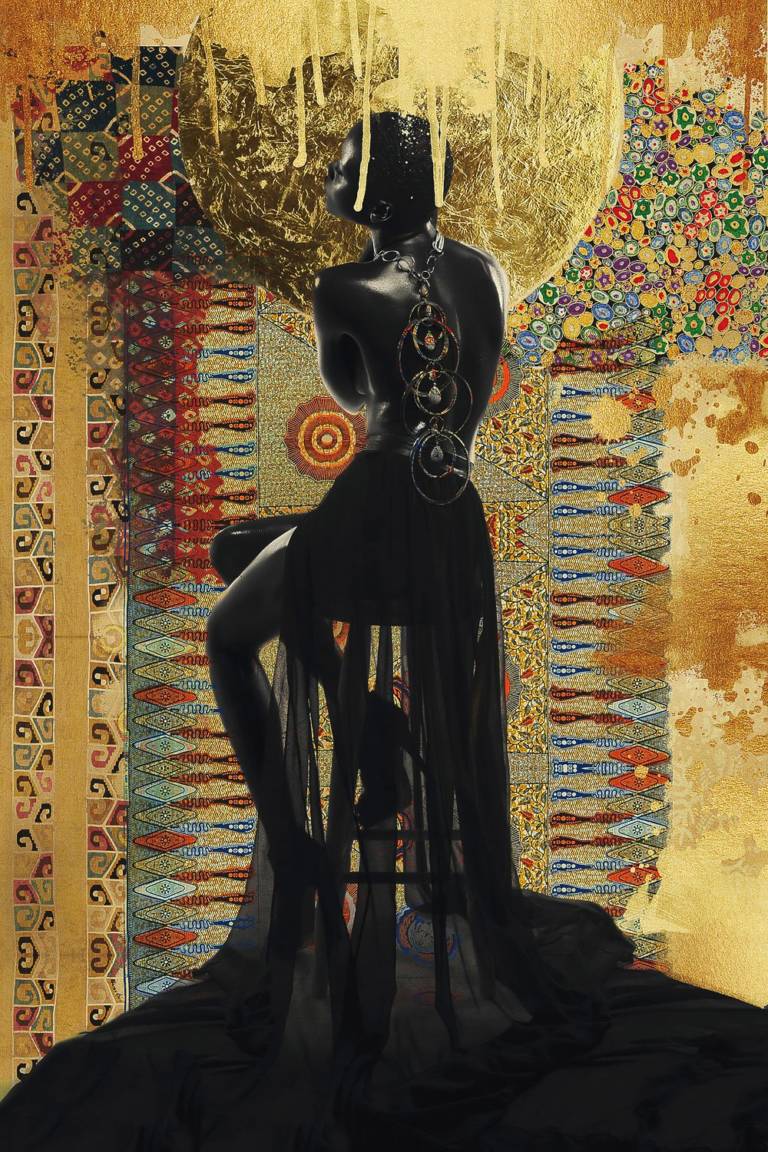
Expectations in Hindsight , 2020
Aluminium dibond in black oak frame with passé-partout 66.7 x 46.7 cm (Edition of 4); 89 x 64.7 cm (Edition of 3); 122.7 x 84.5 cm (Edition of 3)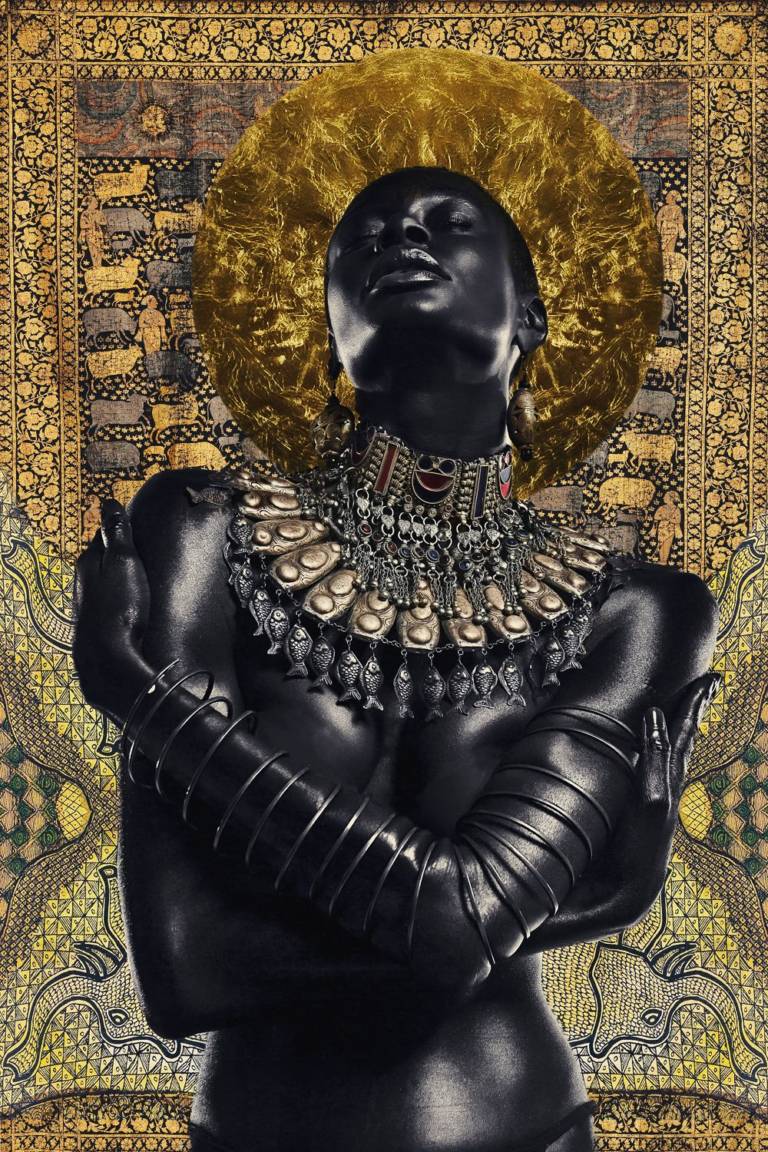
She is Embraced by the Sun , 2020
Aluminium dibond in black oak frame with passé-partout 66.7 x 46.7 cm (Edition of 4); 89 x 64.7 cm (Edition of 3) Sold; 122.7 x 84.5 cm (Edition of 3) Sold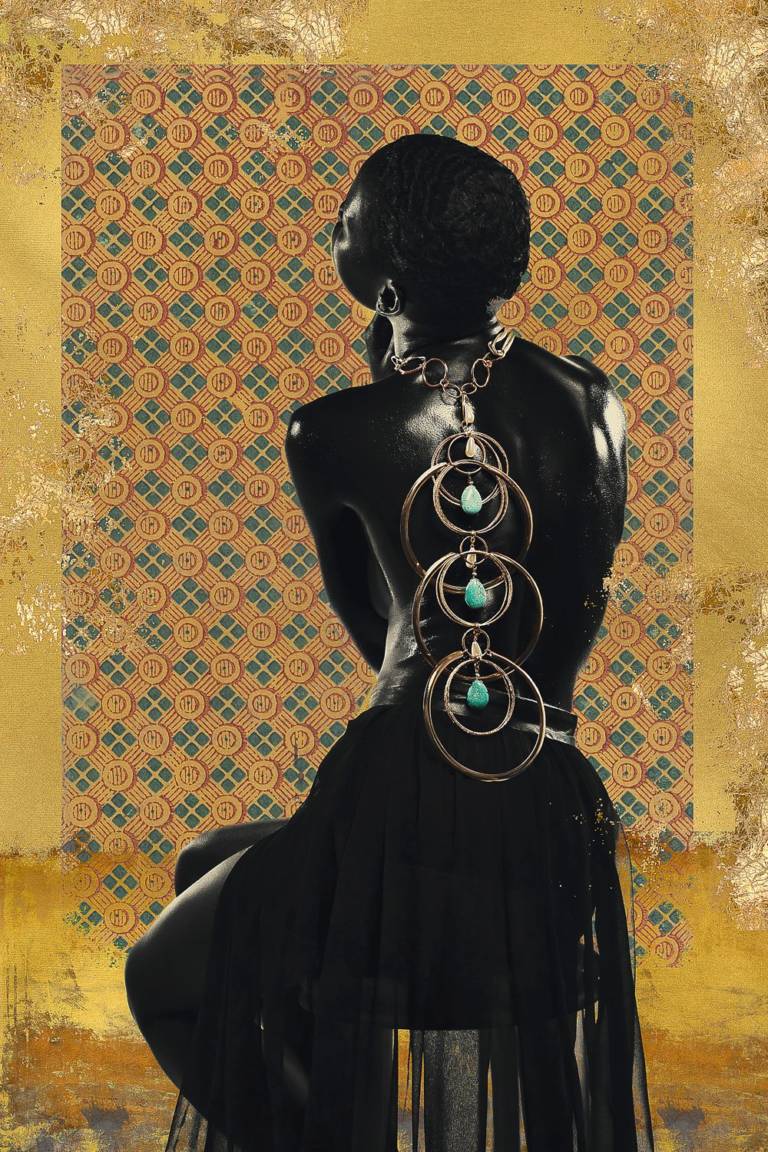
Behind it All , 2020
Aluminium dibond in black oak frame with passé-partout 66.7 x 46.7 cm (Edition of 4); 89 x 64.7 cm (Edition of 3); 122.7 x 84.5 cm (Edition of 3)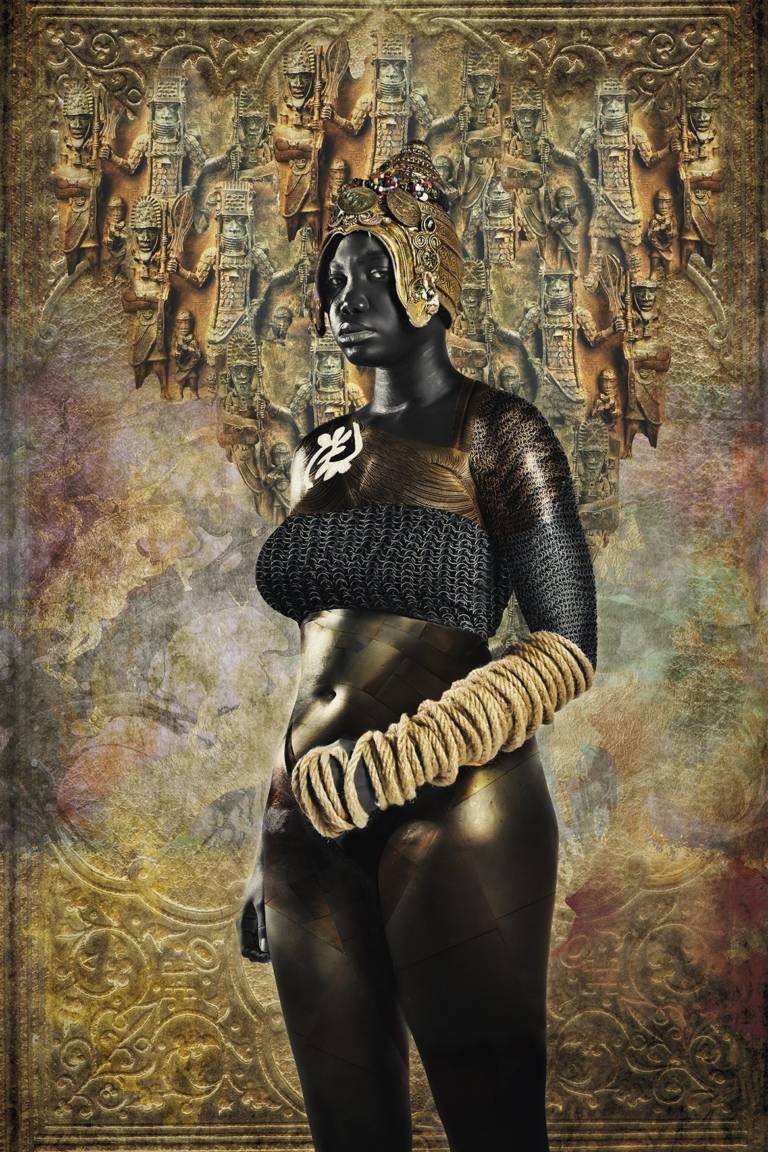
She is Forged , 2021
Aluminium dibond in black oak frame with passé-partout 66.7 x 46.7 cm (Edition of 4); 89 x 64.7 cm (Edition of 3); 122.7 x 84.5 cm (Edition of 3)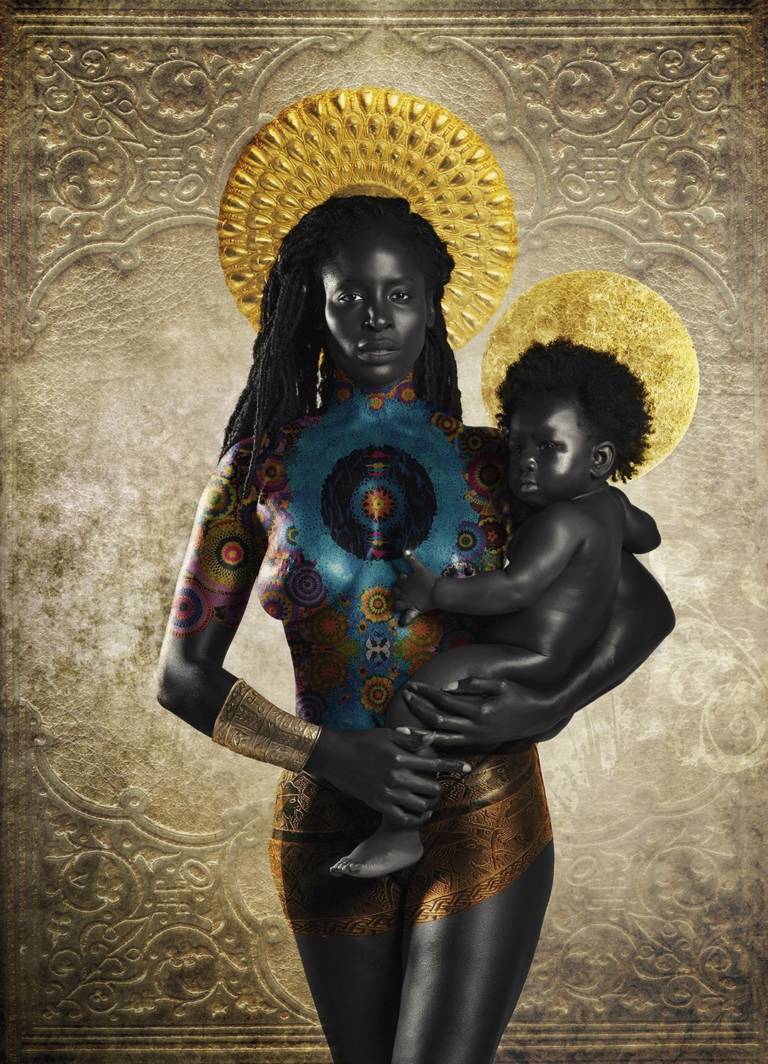
Madonna , 2021
Aluminium dibond in black oak frame with passé-partout 66.7 x 46.7 cm (Edition of 4); 89 x 64.7 cm (Edition of 3) Sold; 122.7 x 84.5 cm (Edition of 3)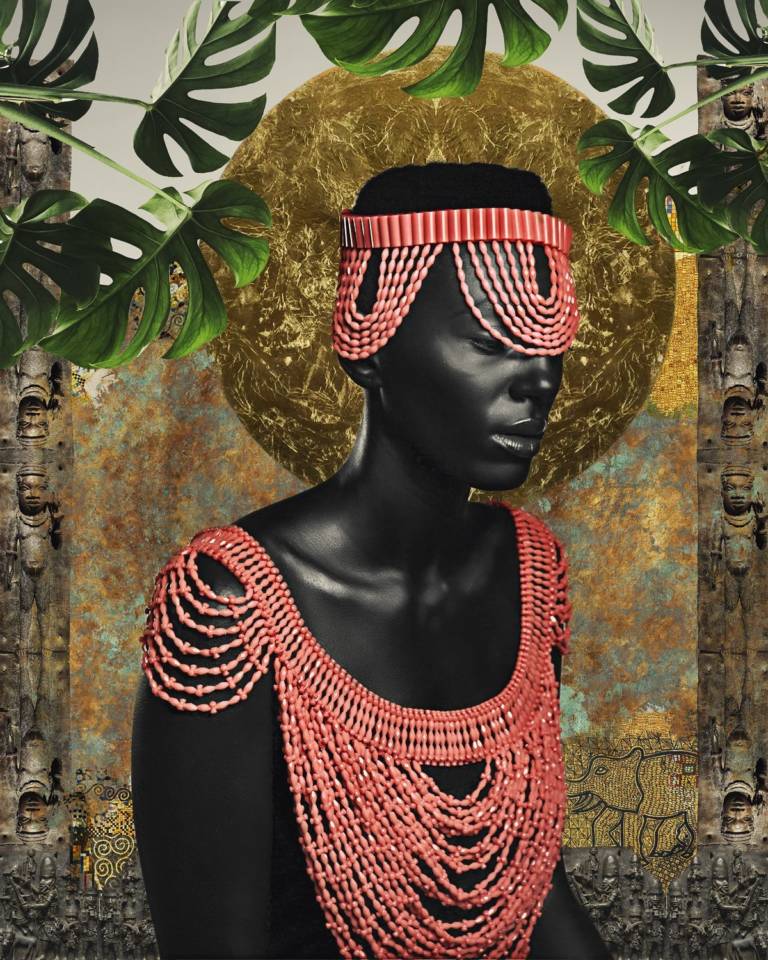
The Edo Women , 2020
Aluminium dibond in black oak frame with passé-partout 66.7 x 46.7 cm (Edition of 4); 89 x 64.7 cm (Edition of 3); 122.7 x 84.5 cm (Edition of 3)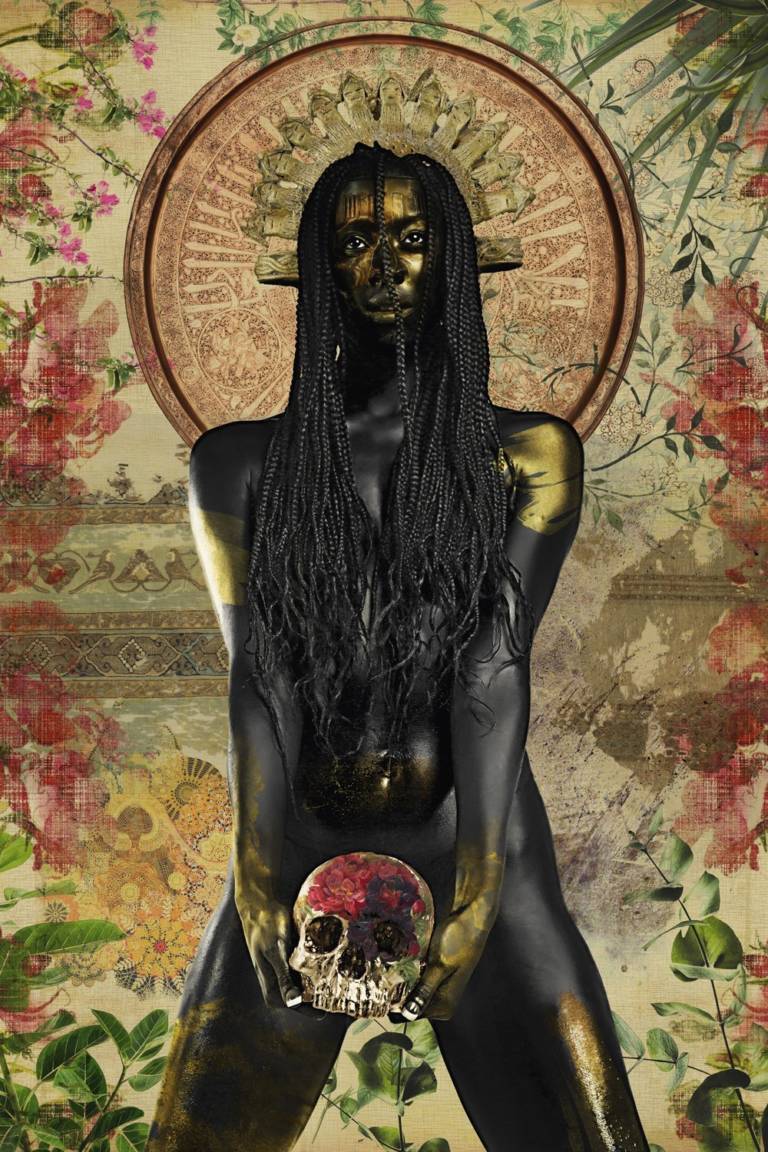
Of Things in Life , 2020
Aluminium dibond in black oak frame with passé-partout 66.7 x 46.7 cm (Edition of 4); 89 x 64.7 cm (Edition of 3); 122.7 x 84.5 cm (Edition of 3)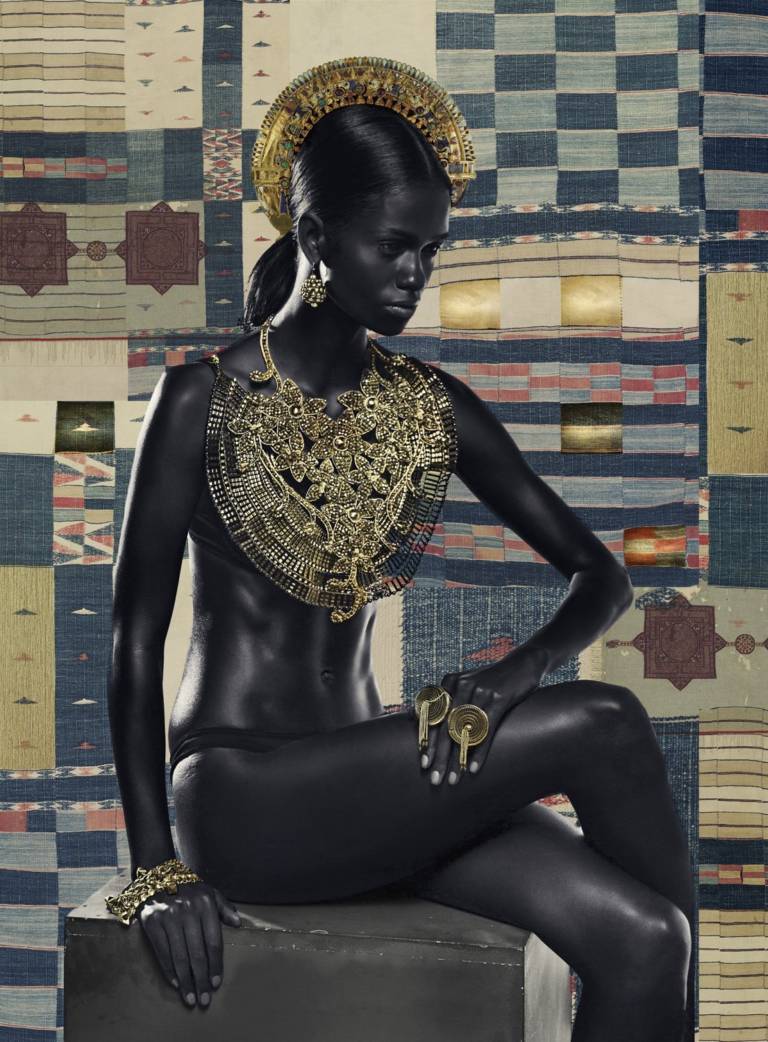
Framed by Tapestry , 2020
Aluminium dibond in black oak frame with passé-partout 66.7 x 46.7 cm (Edition of 4); 89 x 64.7 cm (Edition of 3); 122.7 x 84.5 cm (Edition of 3)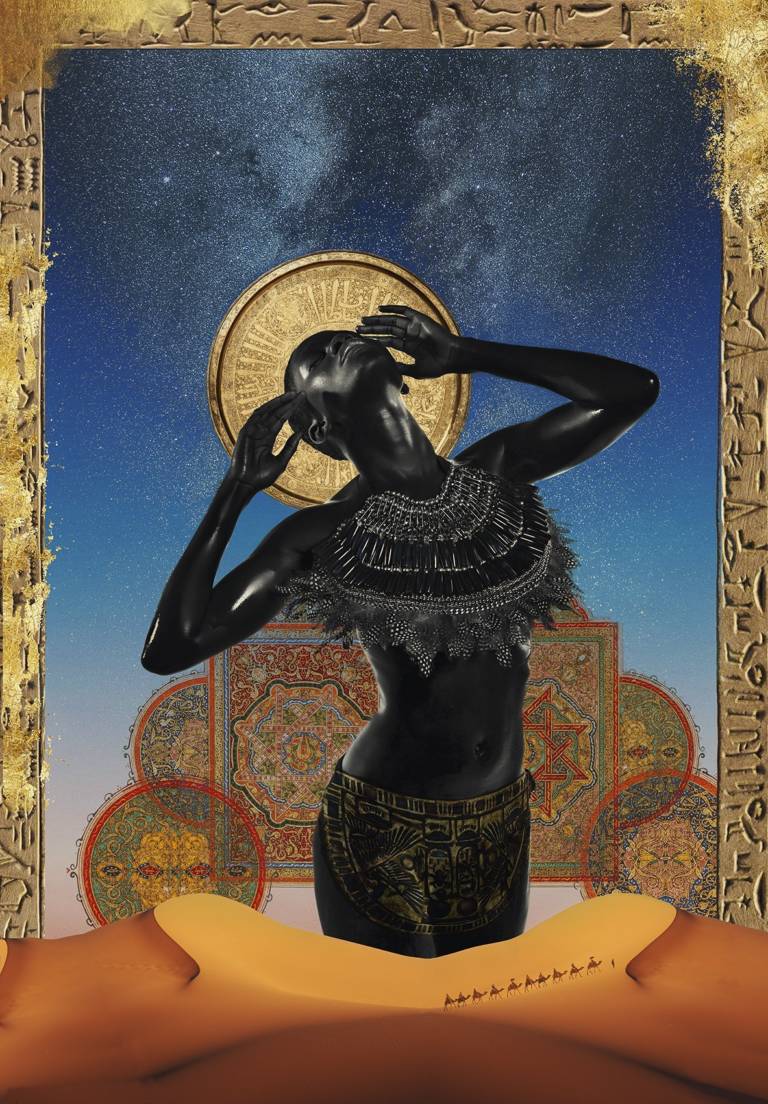
Philosophies and Cosmologies , 2021
Aluminium dibond in black oak frame with passé-partout 66.7 x 46.7 cm (Edition of 4); 89 x 64.7 cm (Edition of 3); 122.7 x 84.5 cm (Edition of 3)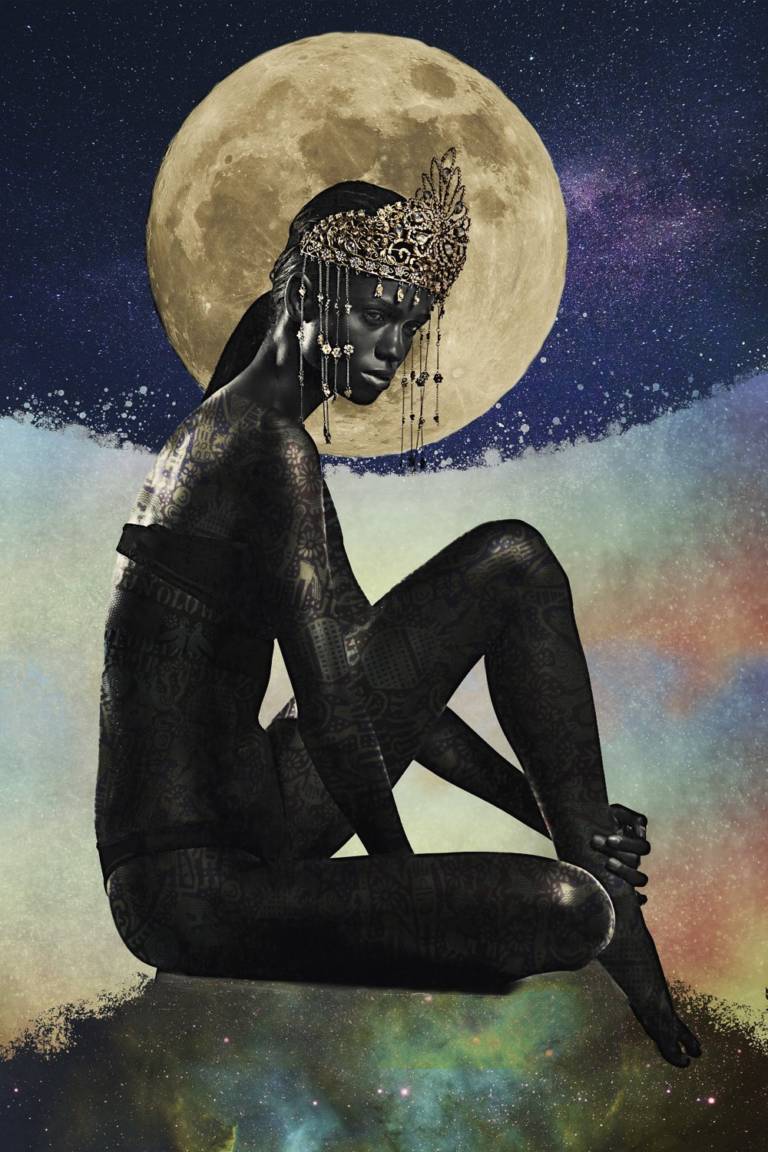
Adorned by the Heavens , 2021
Aluminium dibond in black oak frame with passé-partout 66.7 x 46.7 cm (Edition of 4); 89 x 64.7 cm (Edition of 3); 122.7 x 84.5 cm (Edition of 3)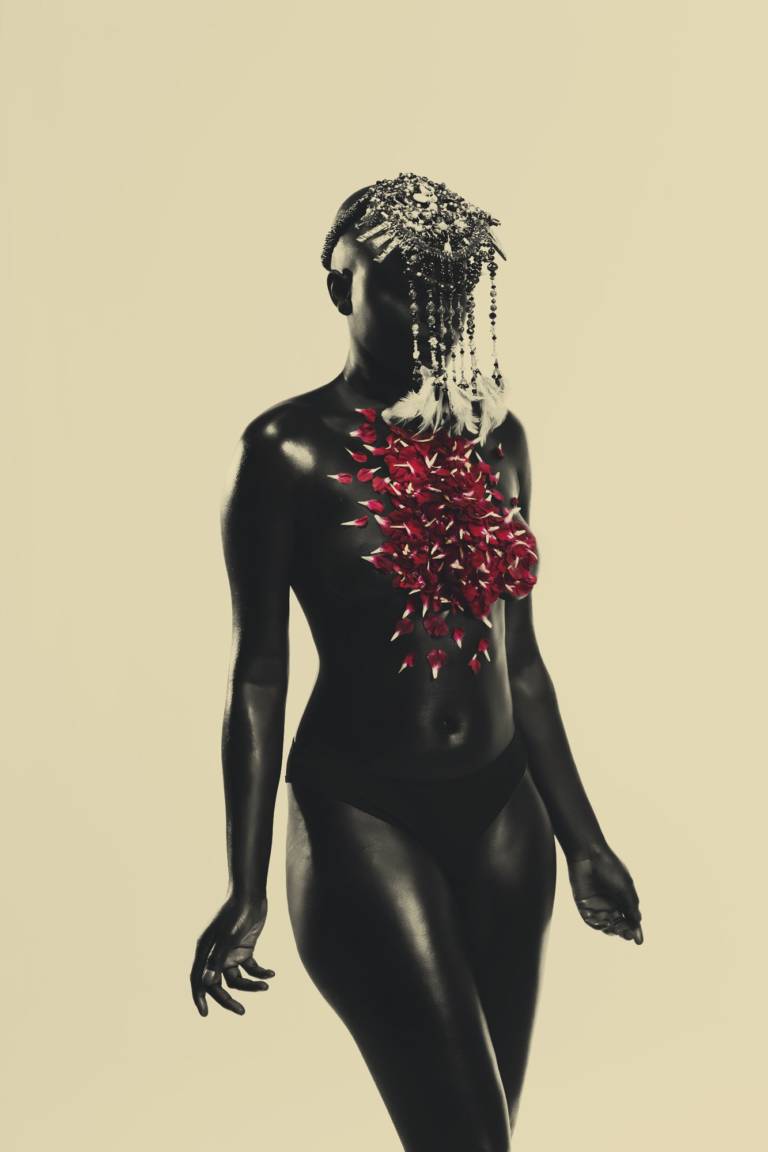
Masquerade Lies , 2018
Impression metalique 83 x 56 cm (Edition of 3); 102 x 66 cm (Edition of 3)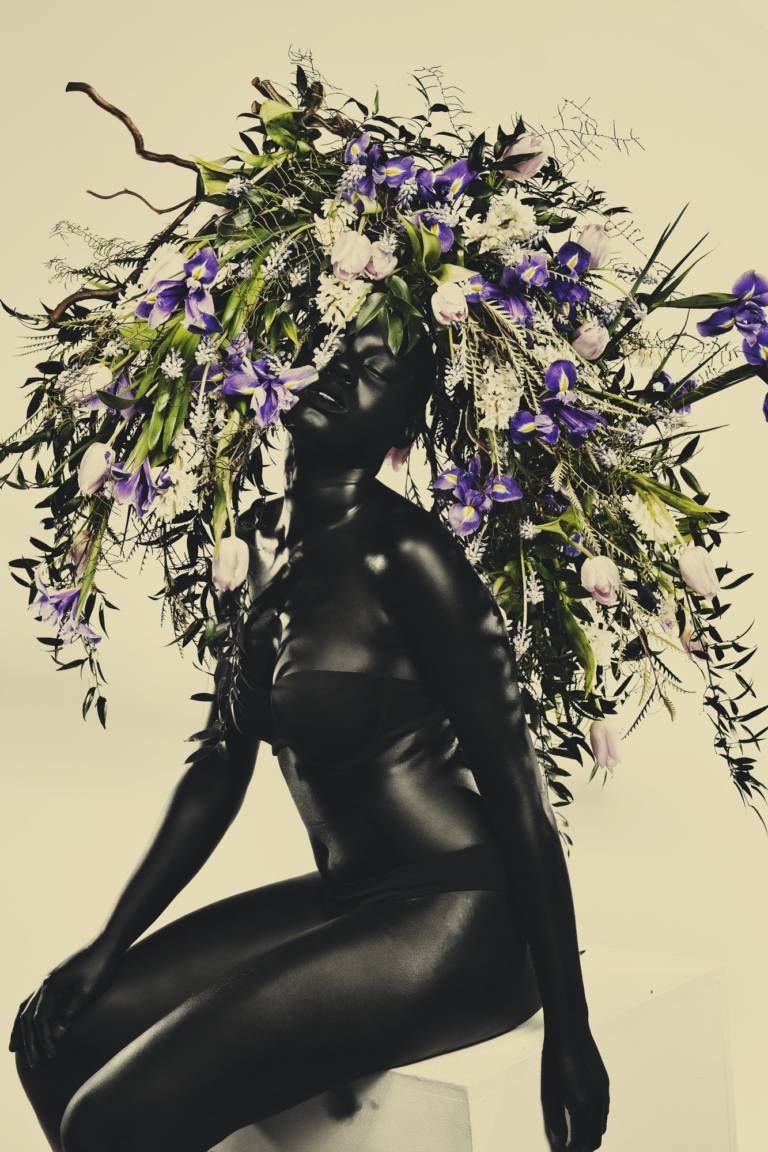
Flambouyant Burdens , 2018
Metallic print 83 x 56 cm (Edition of 3); 102 x 66 cm (Edition of 3)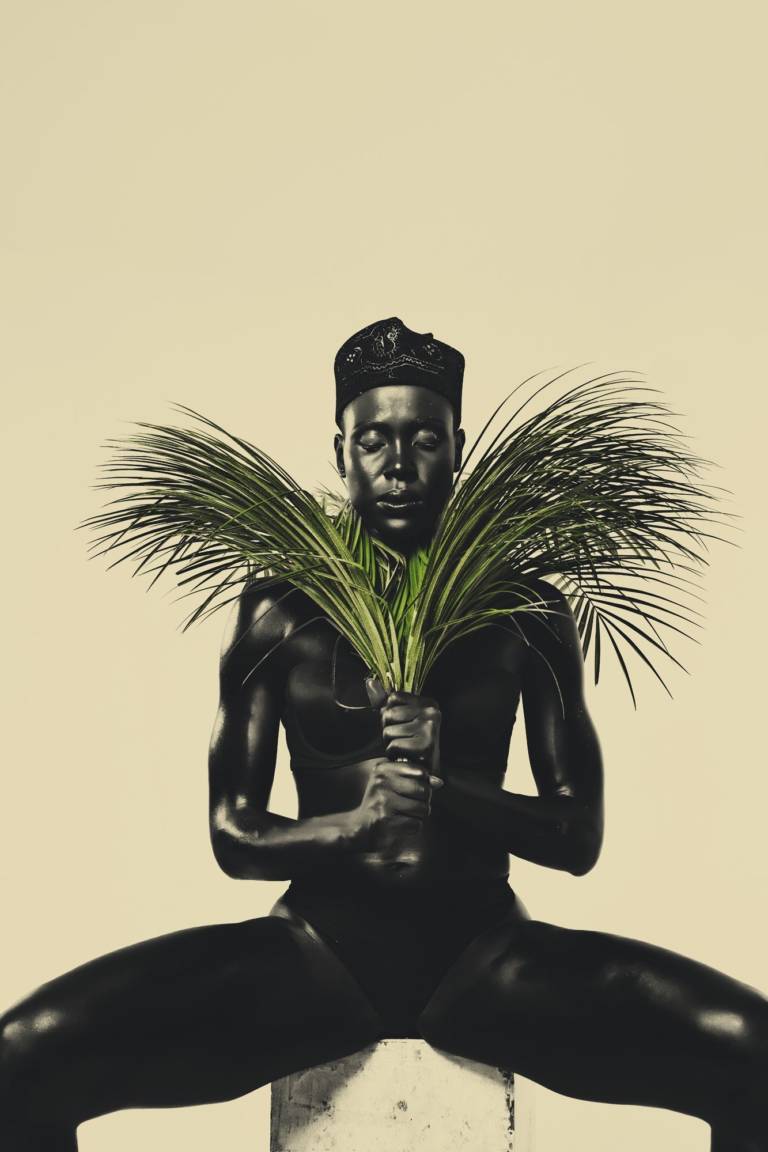
My Masculine , 2018
Metallic Print 83 x 56 cm (Edition of 3); 102 x 66 cm (Edition of 3) Edition 3 and 3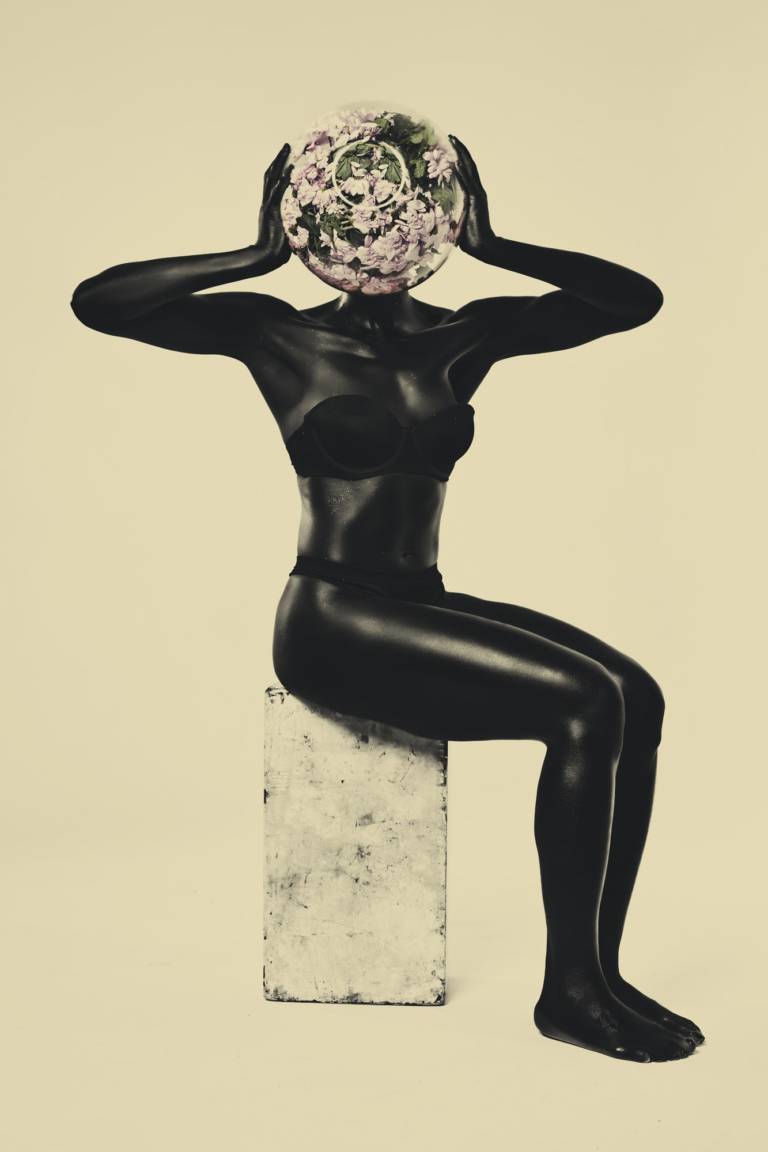
Suffocated Destinies , 2018
Metallic print 83 x 56 cm (Edition of 3) or 102 x 66 cm (Edition of 3)